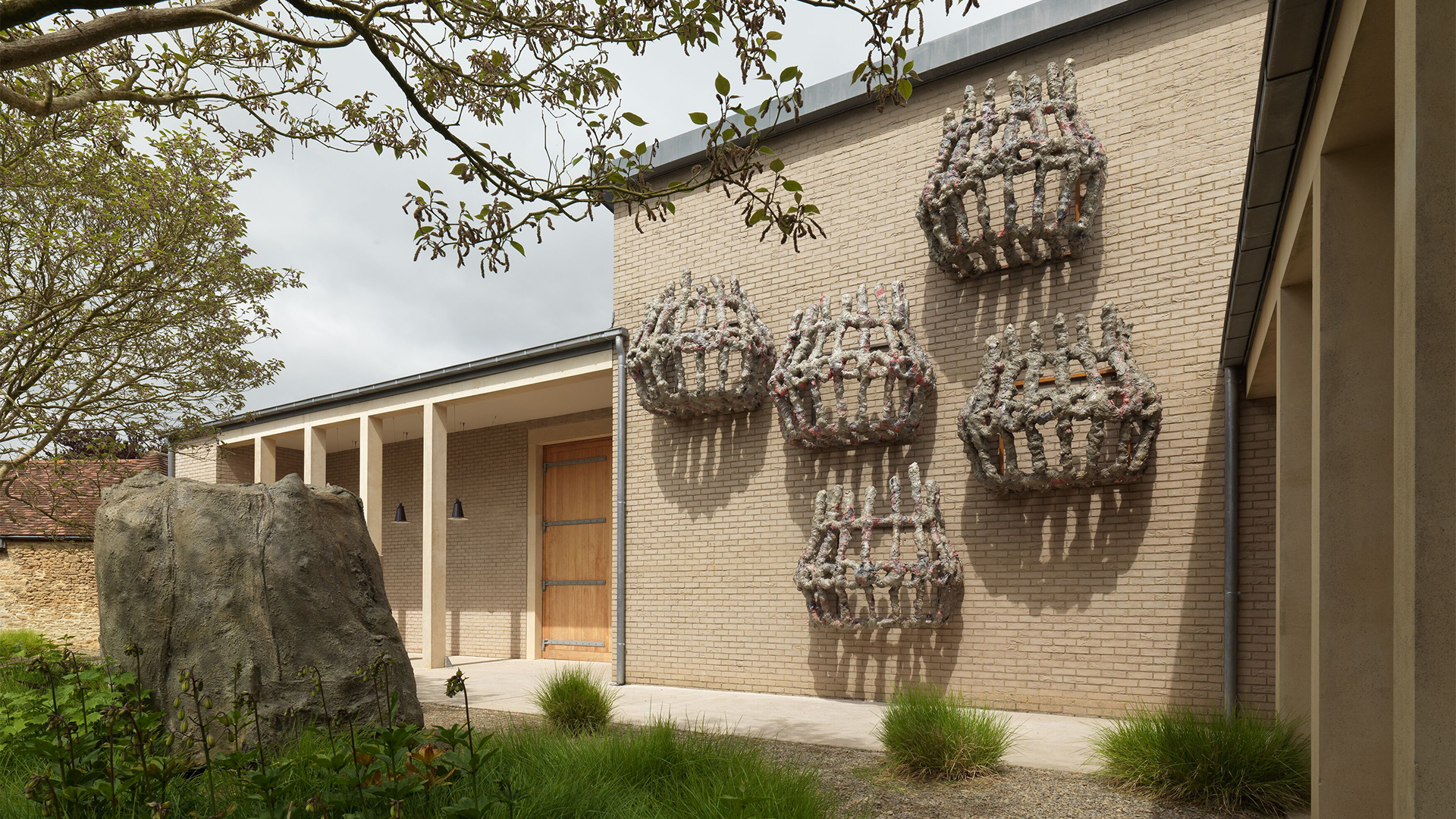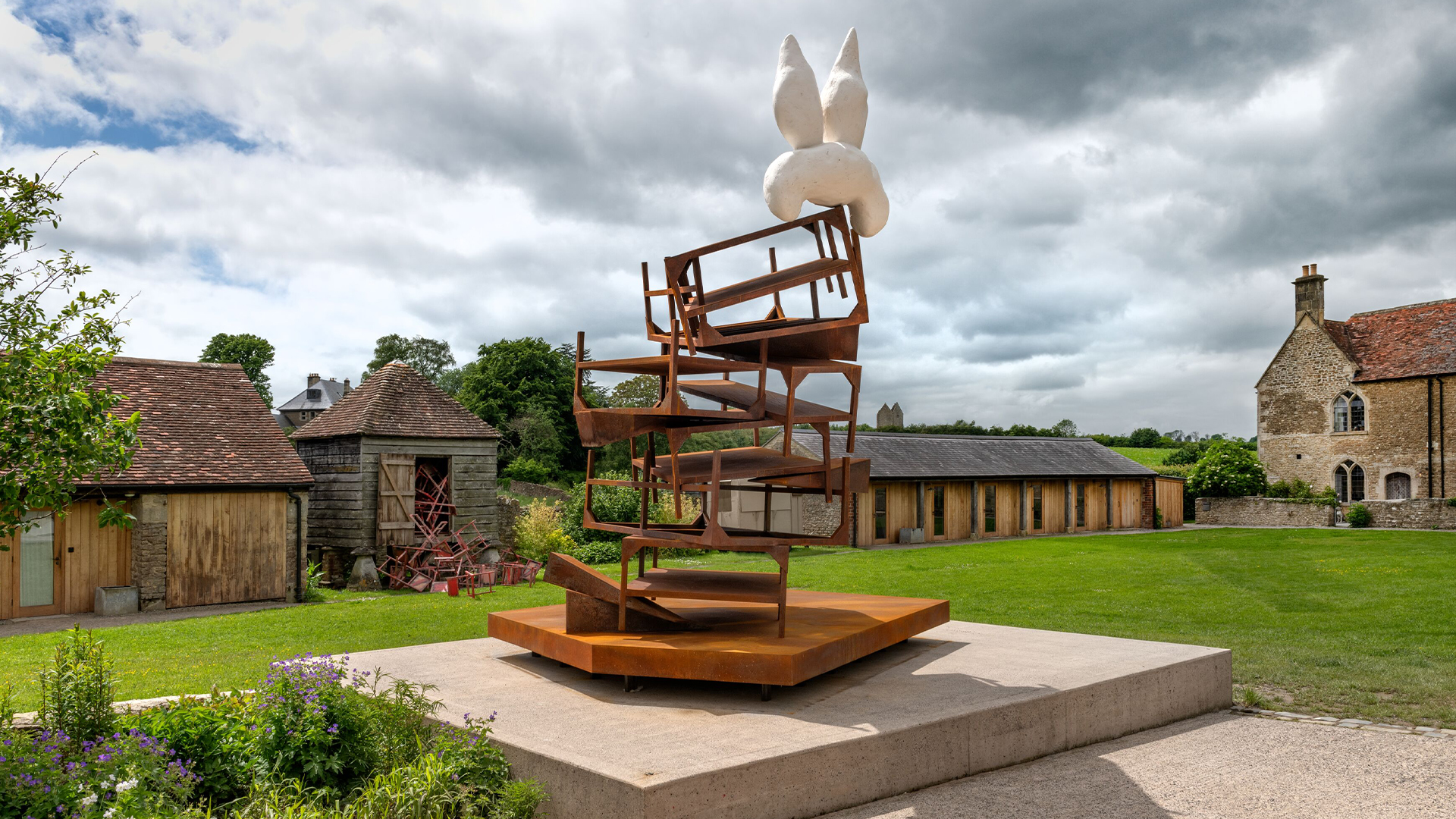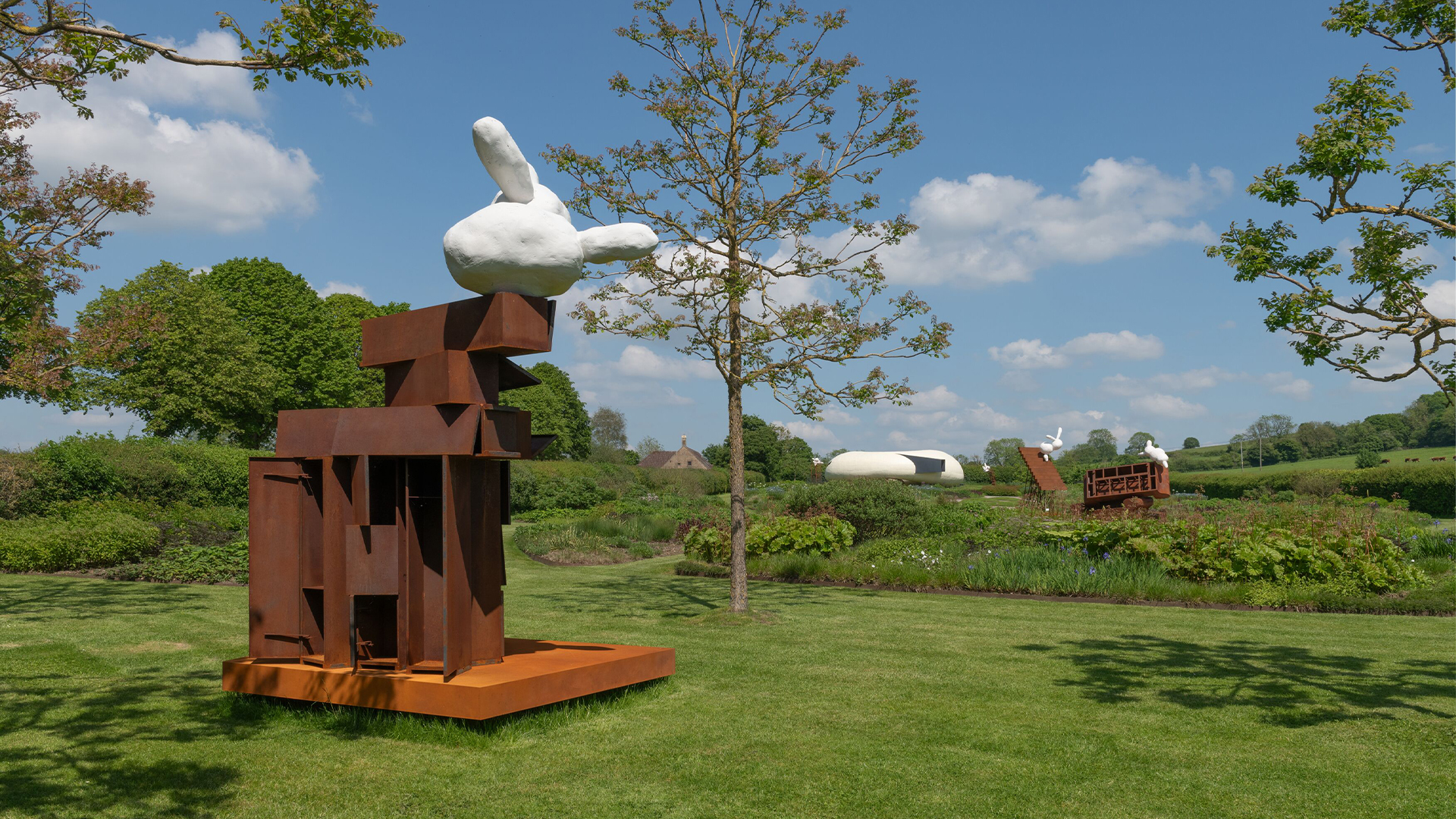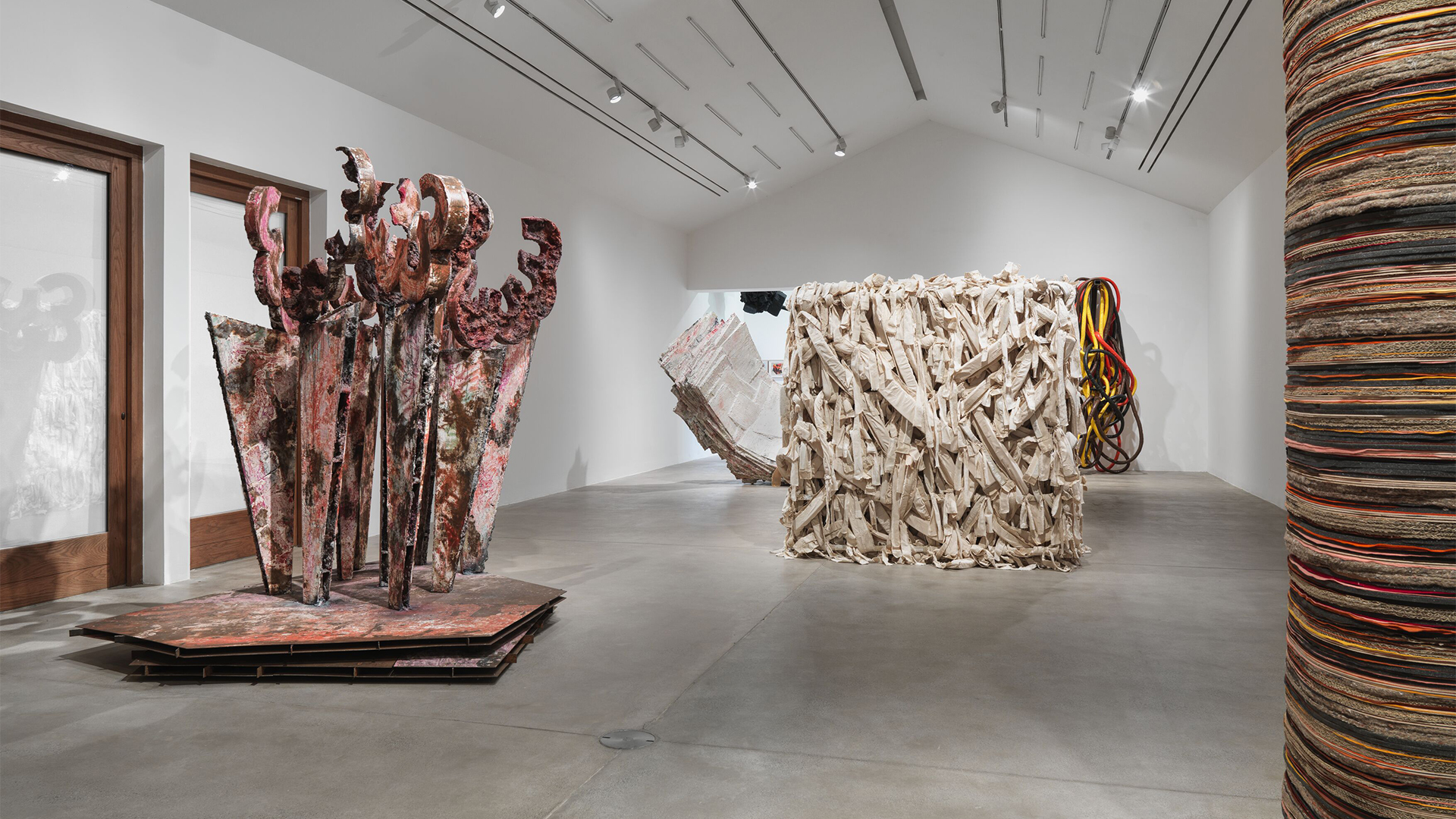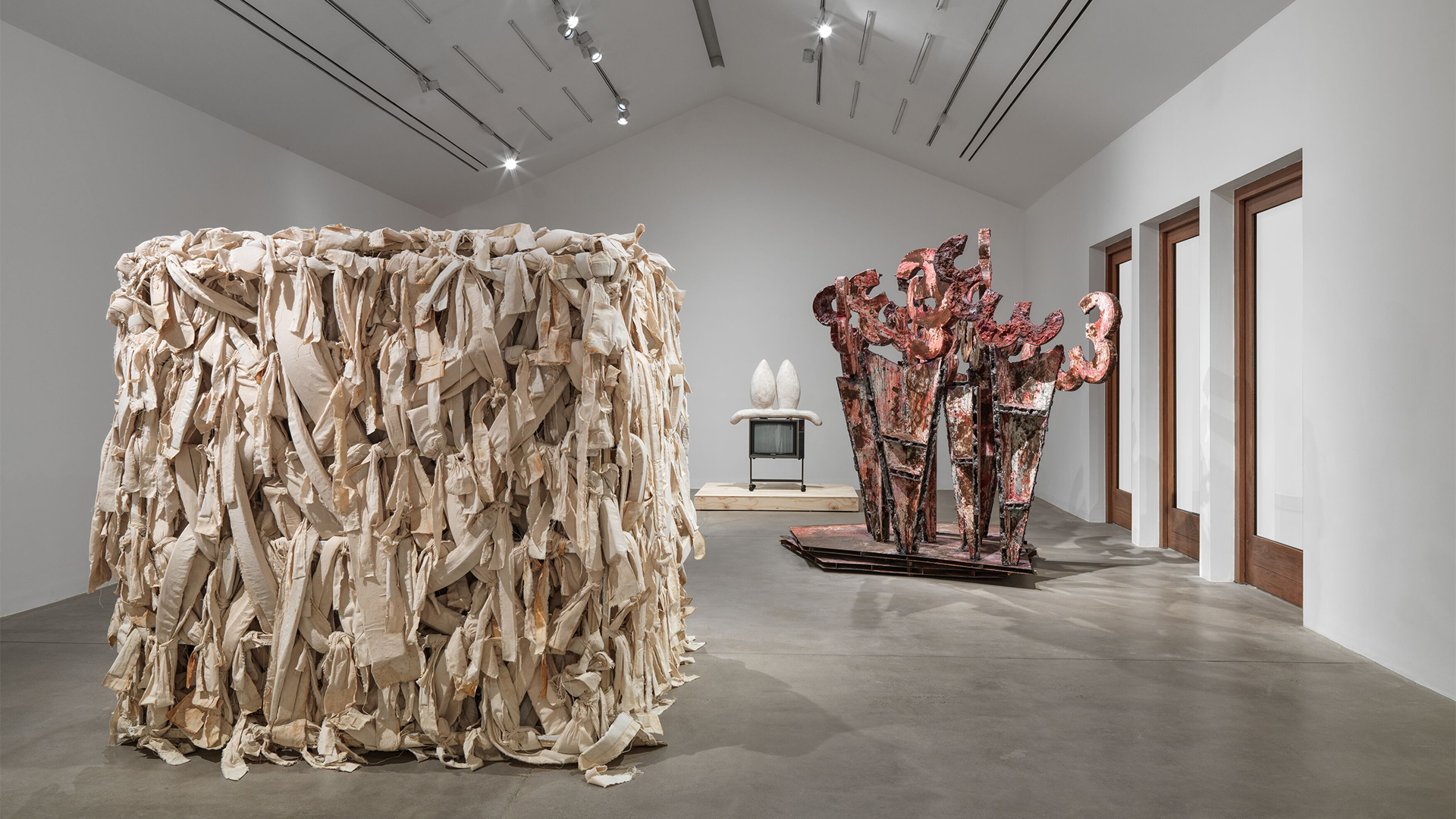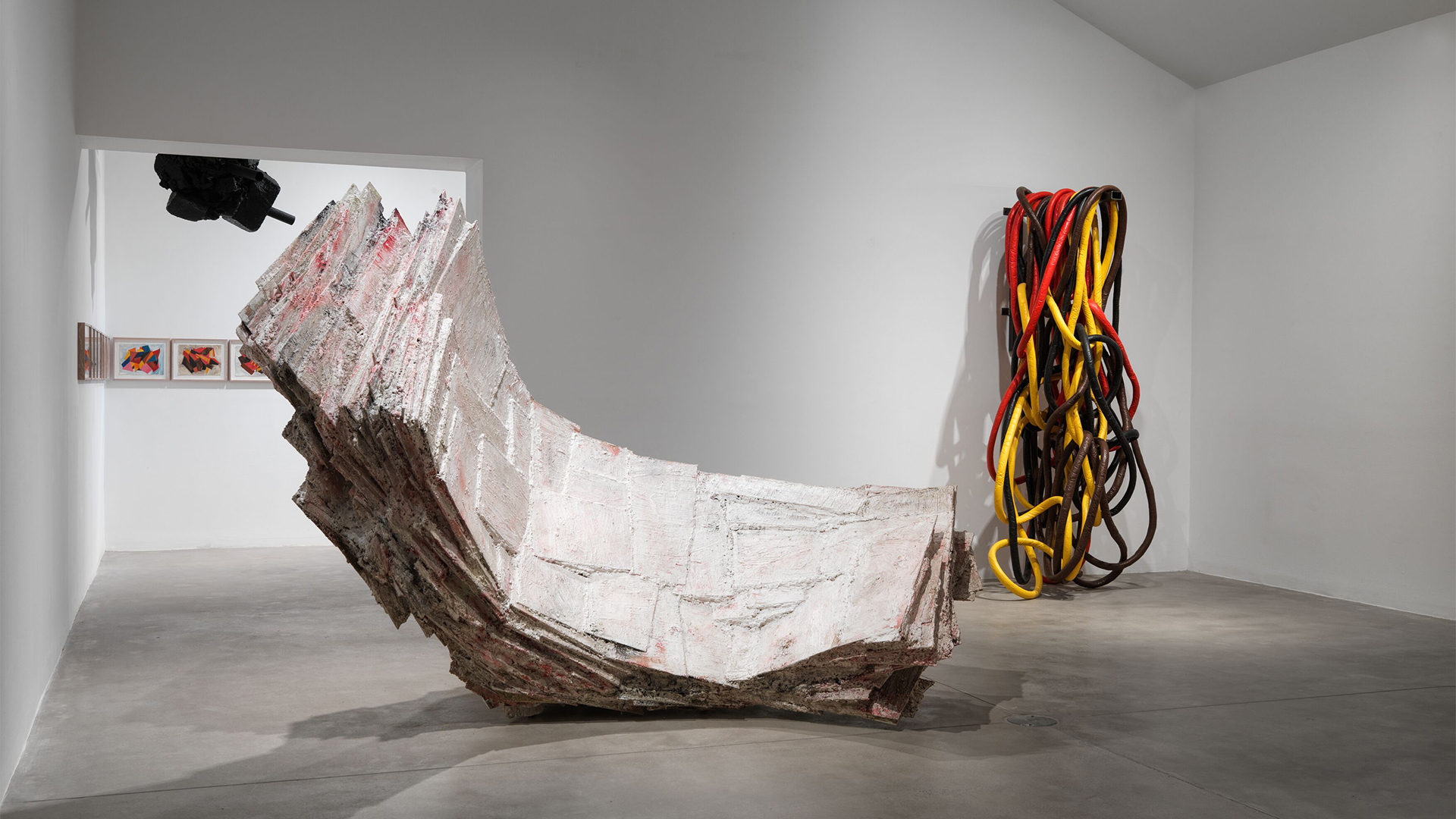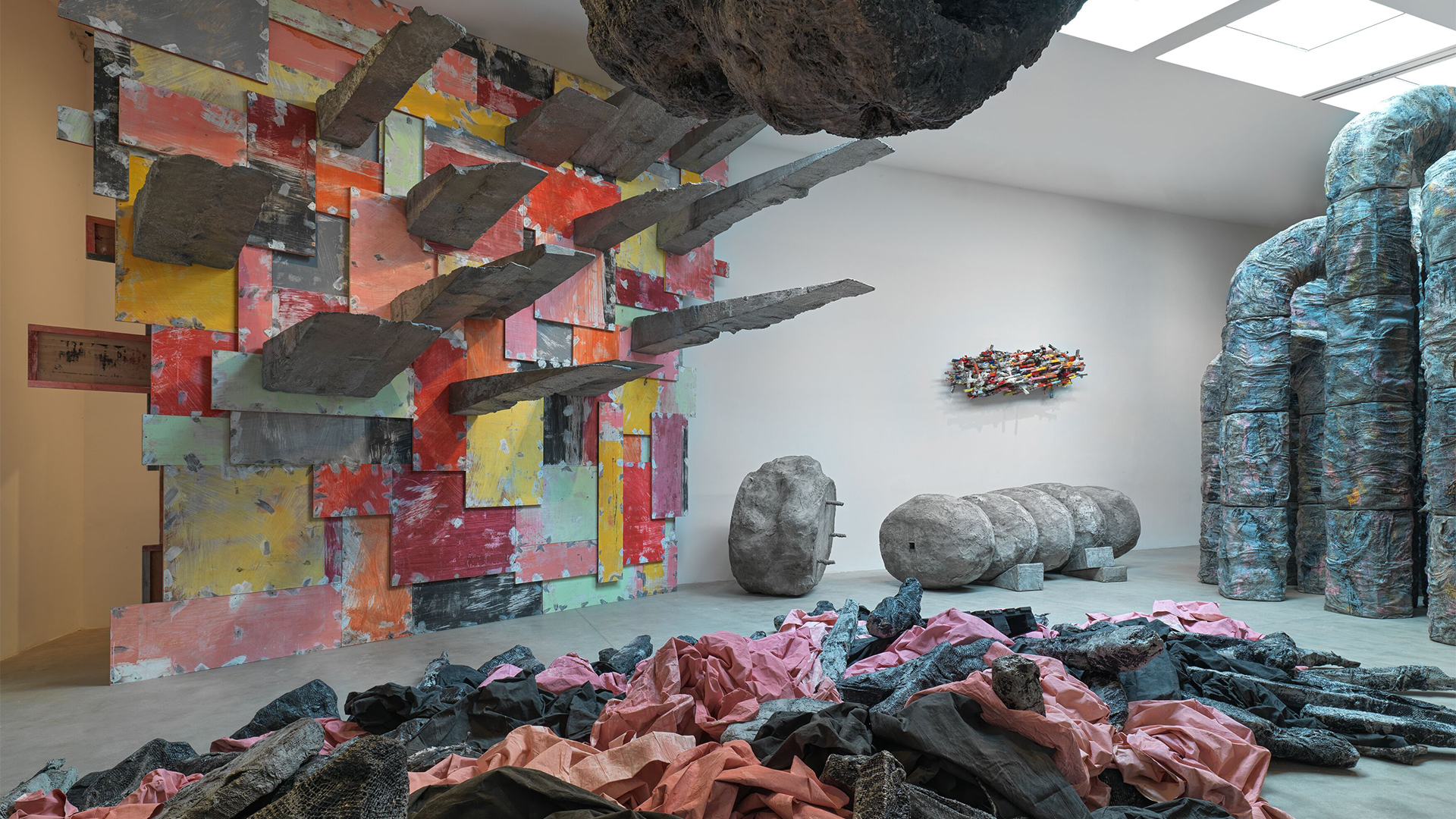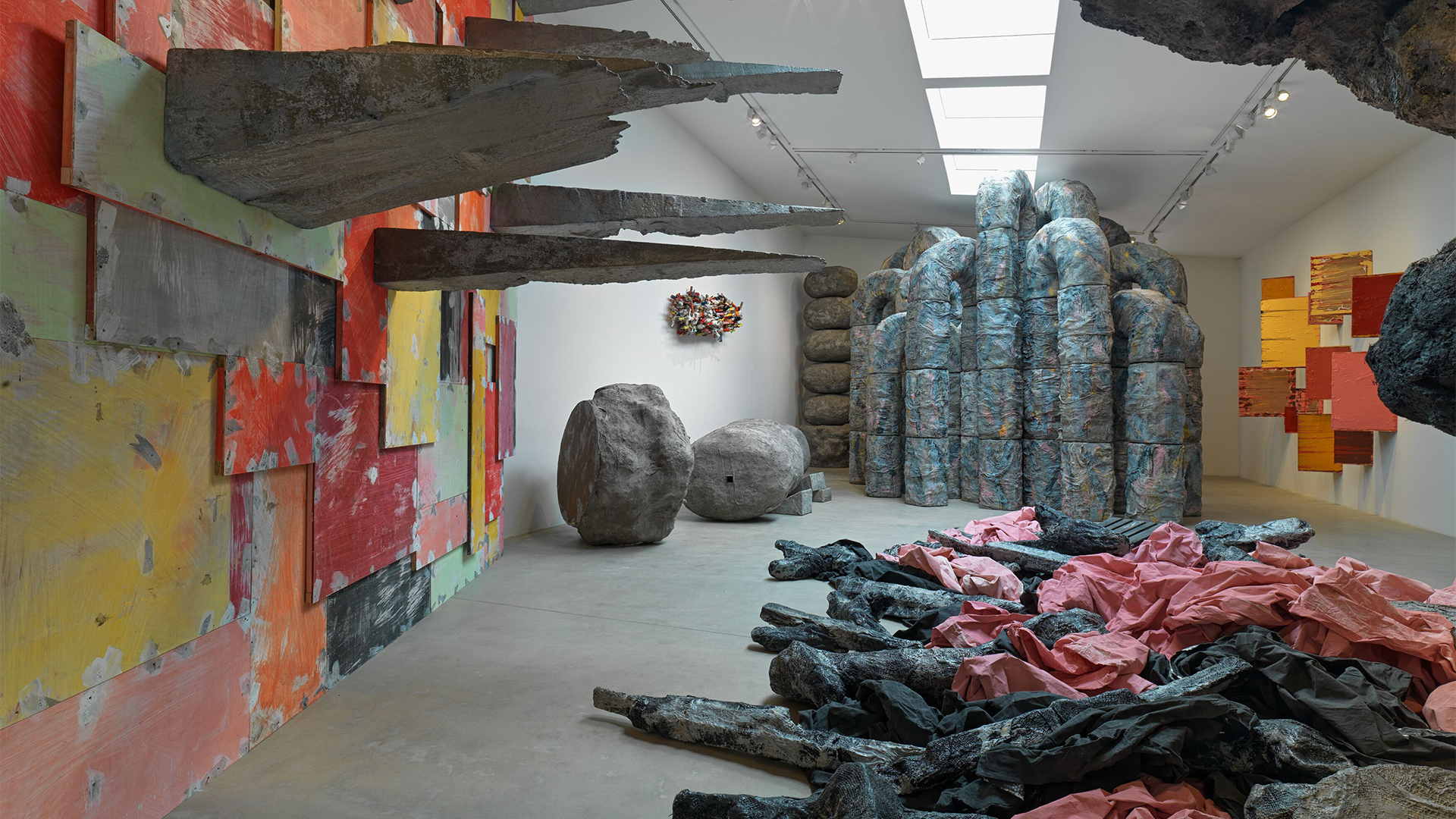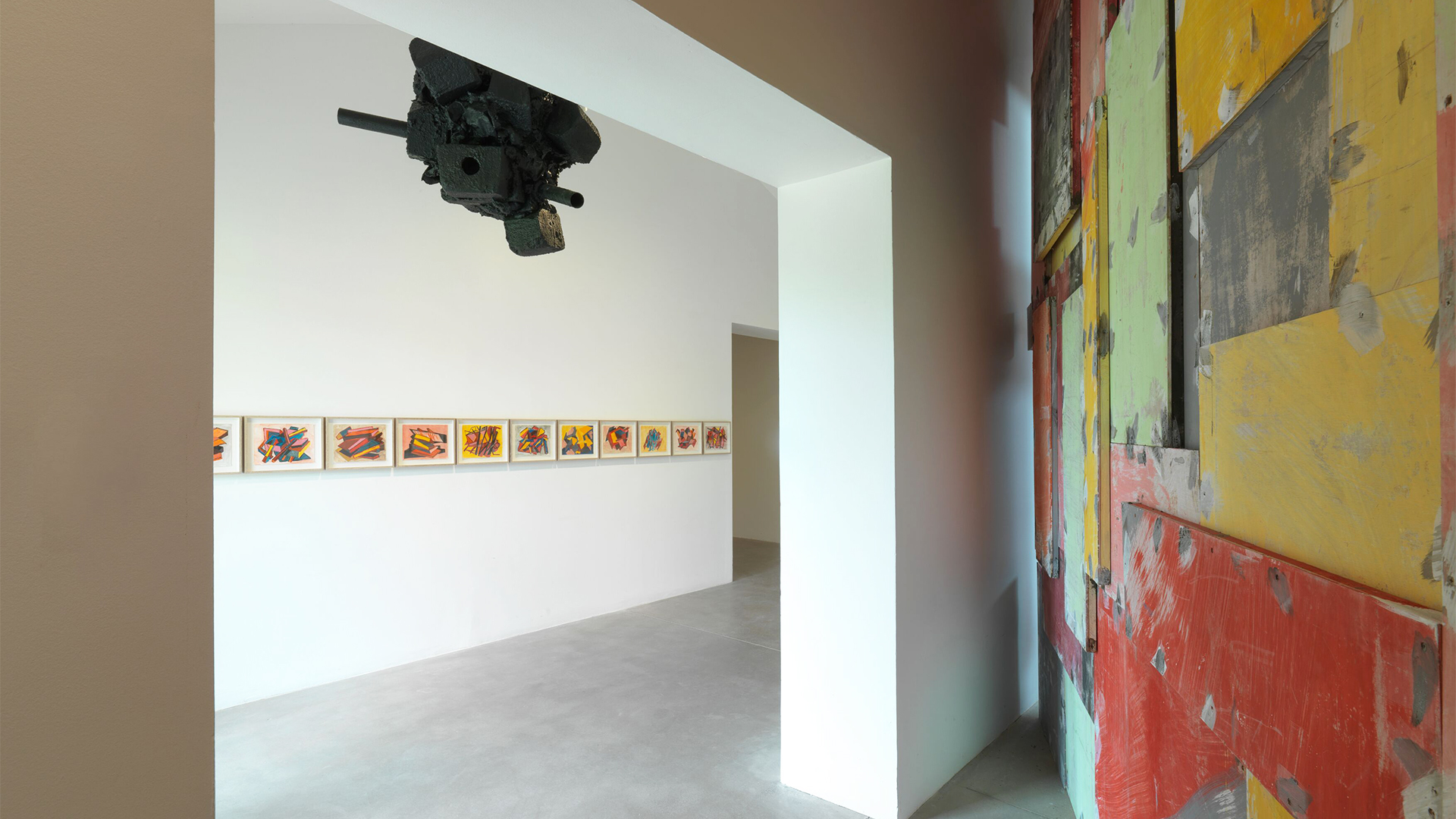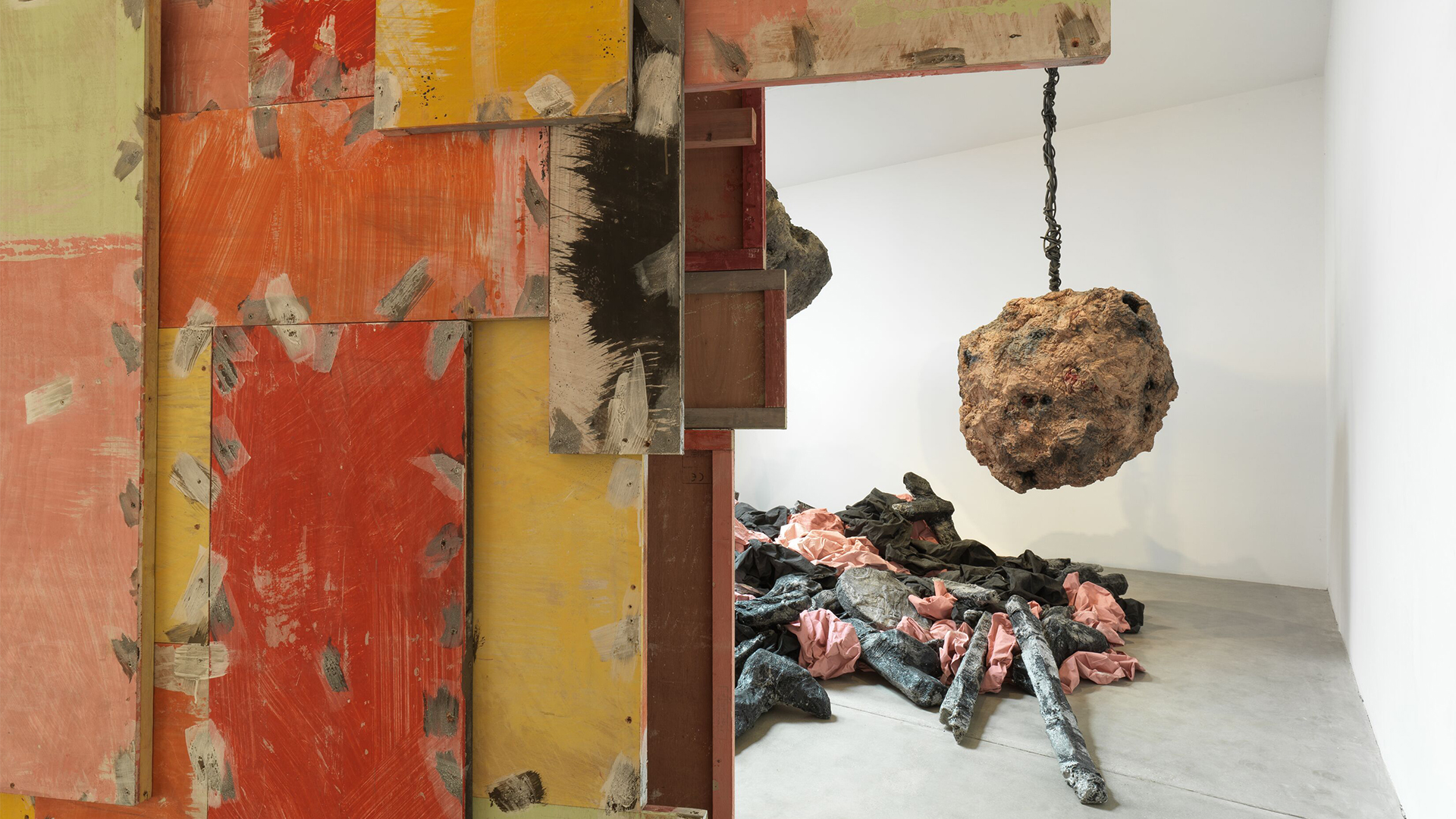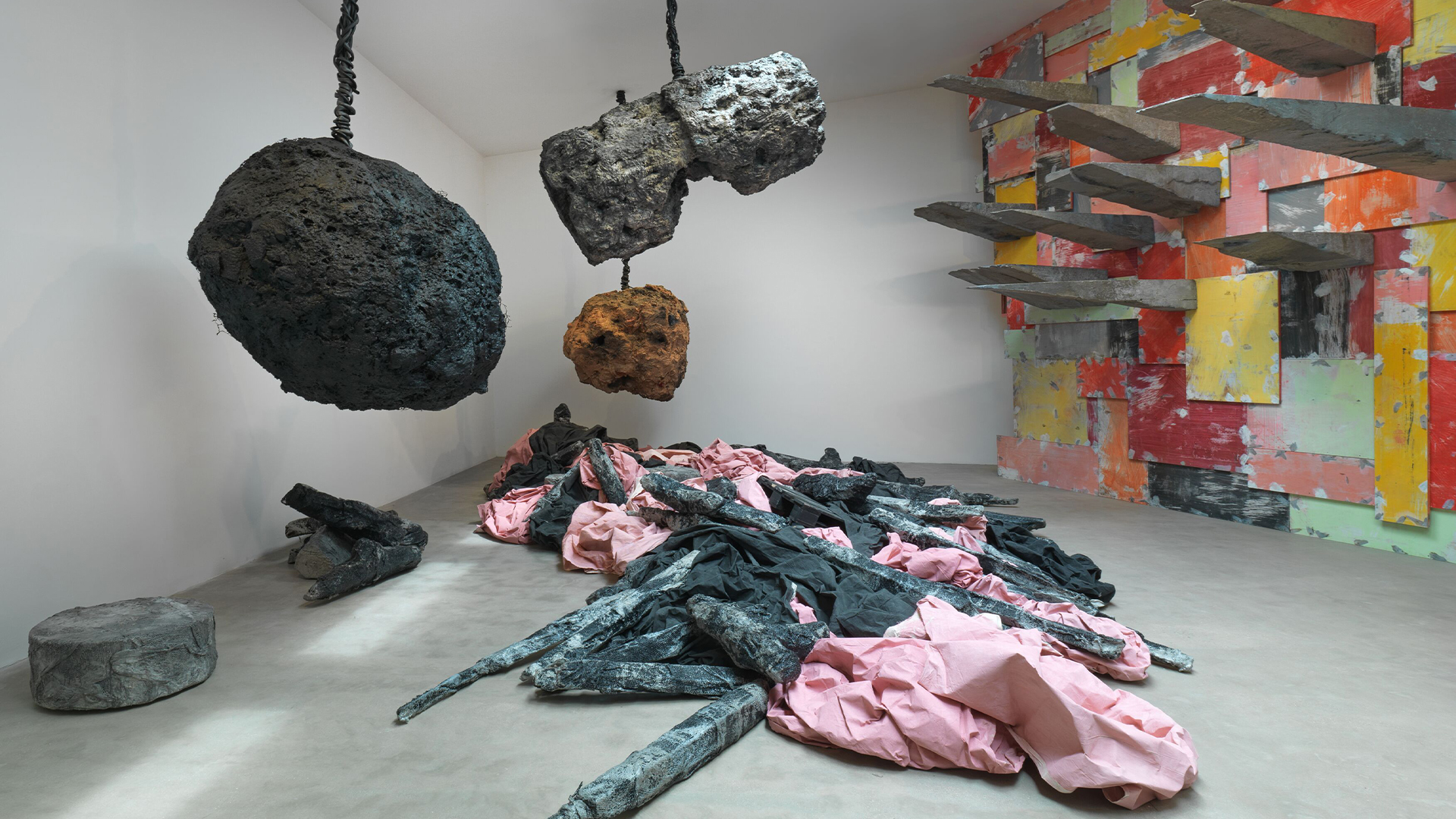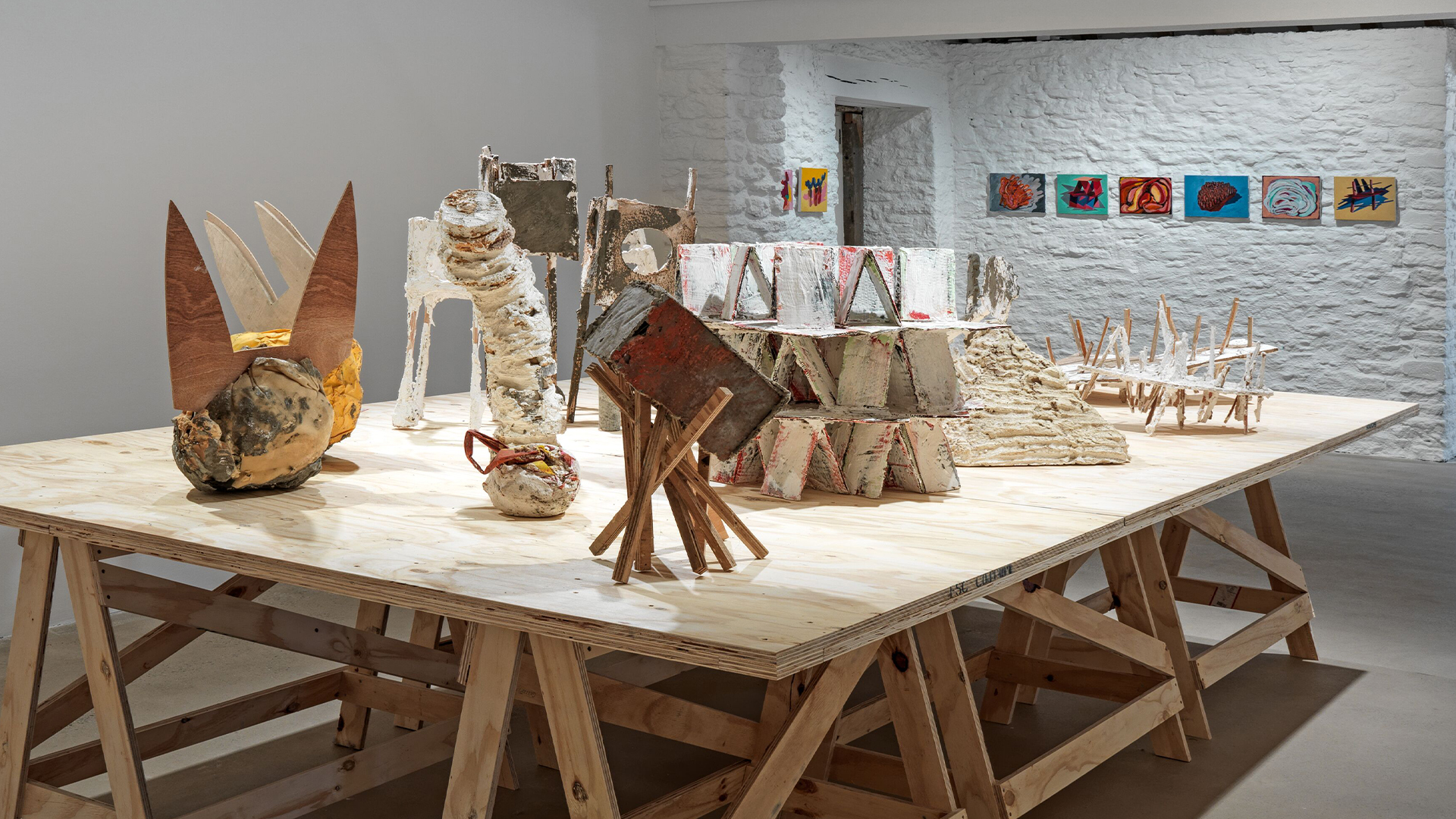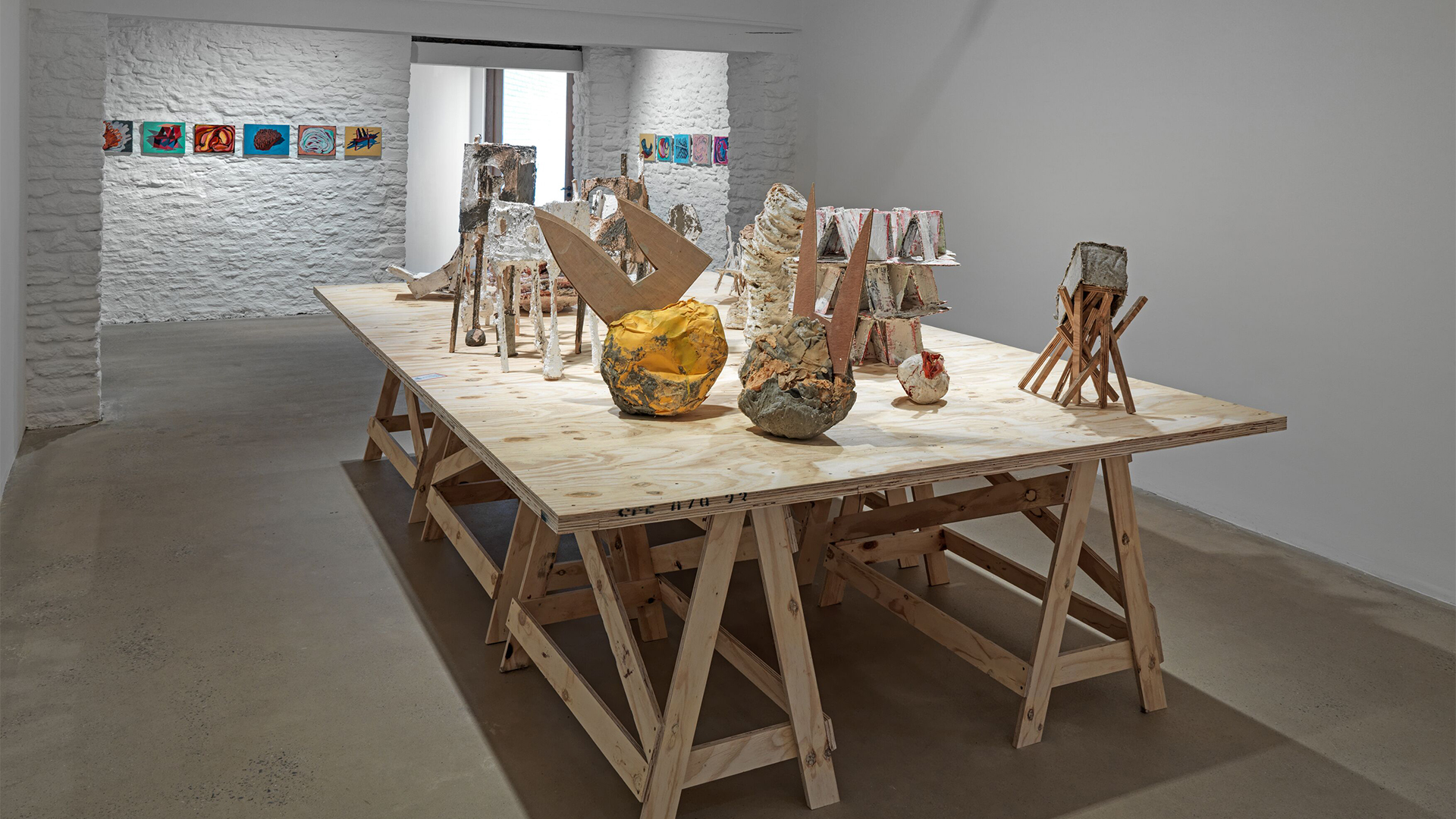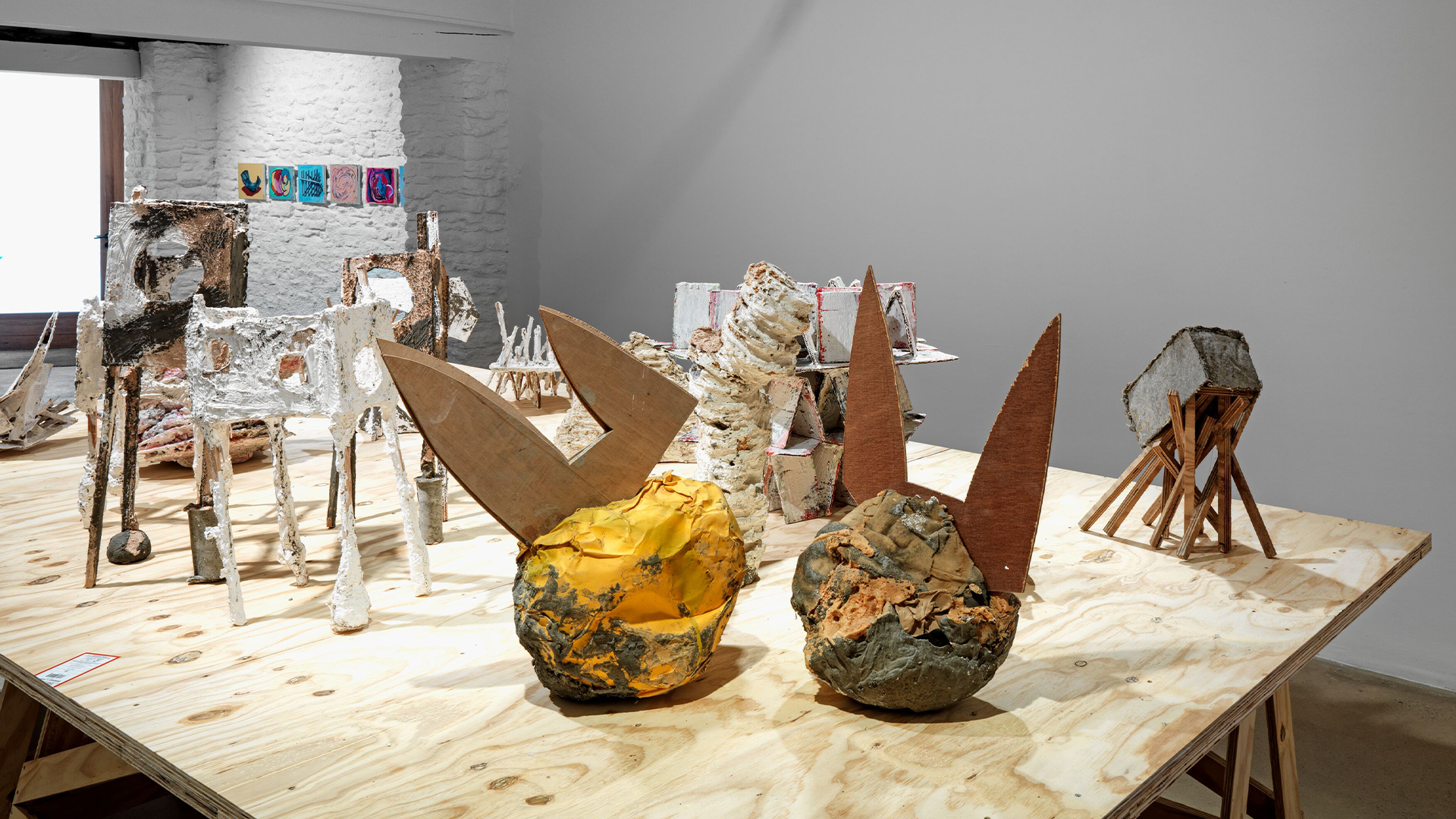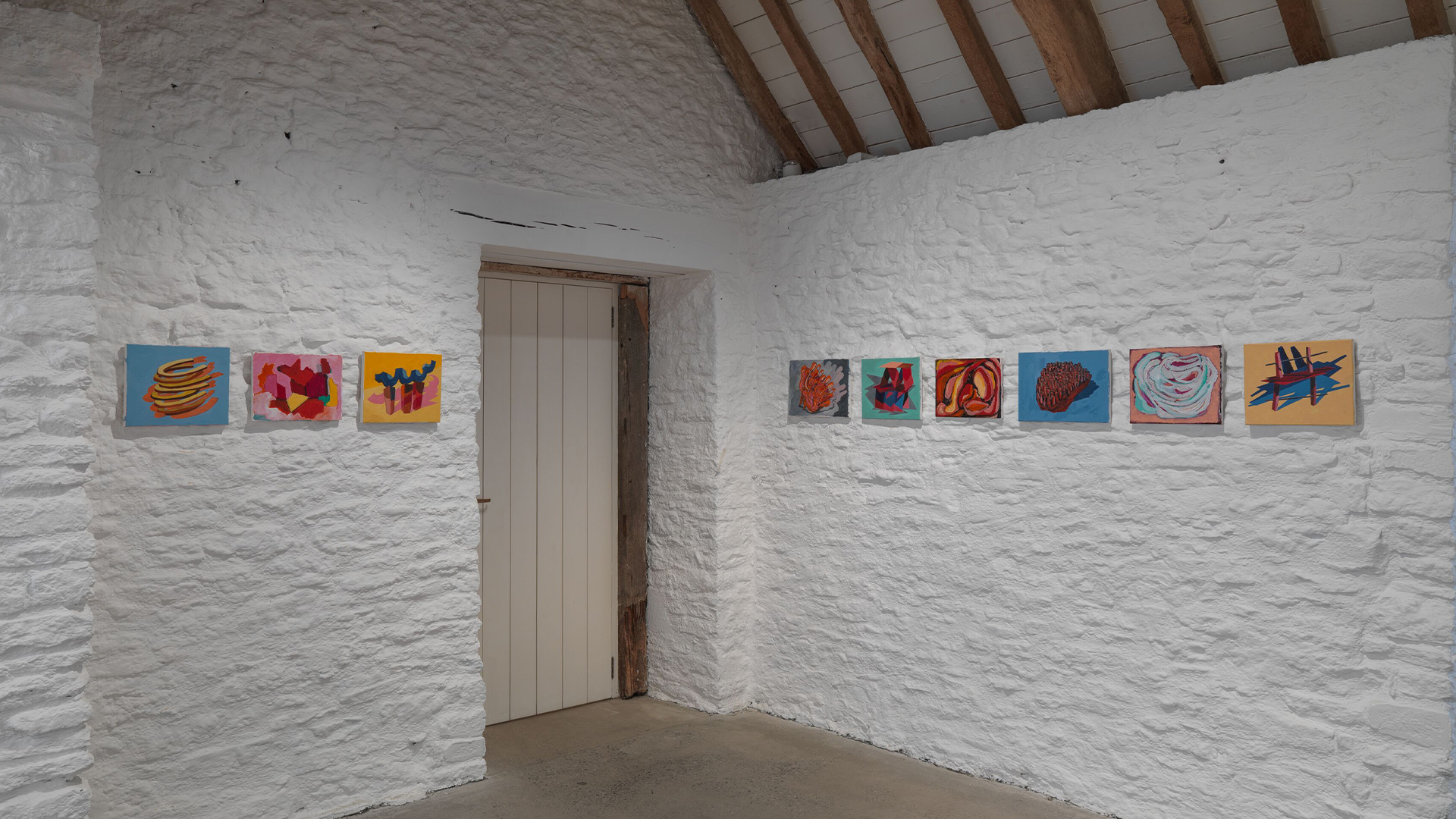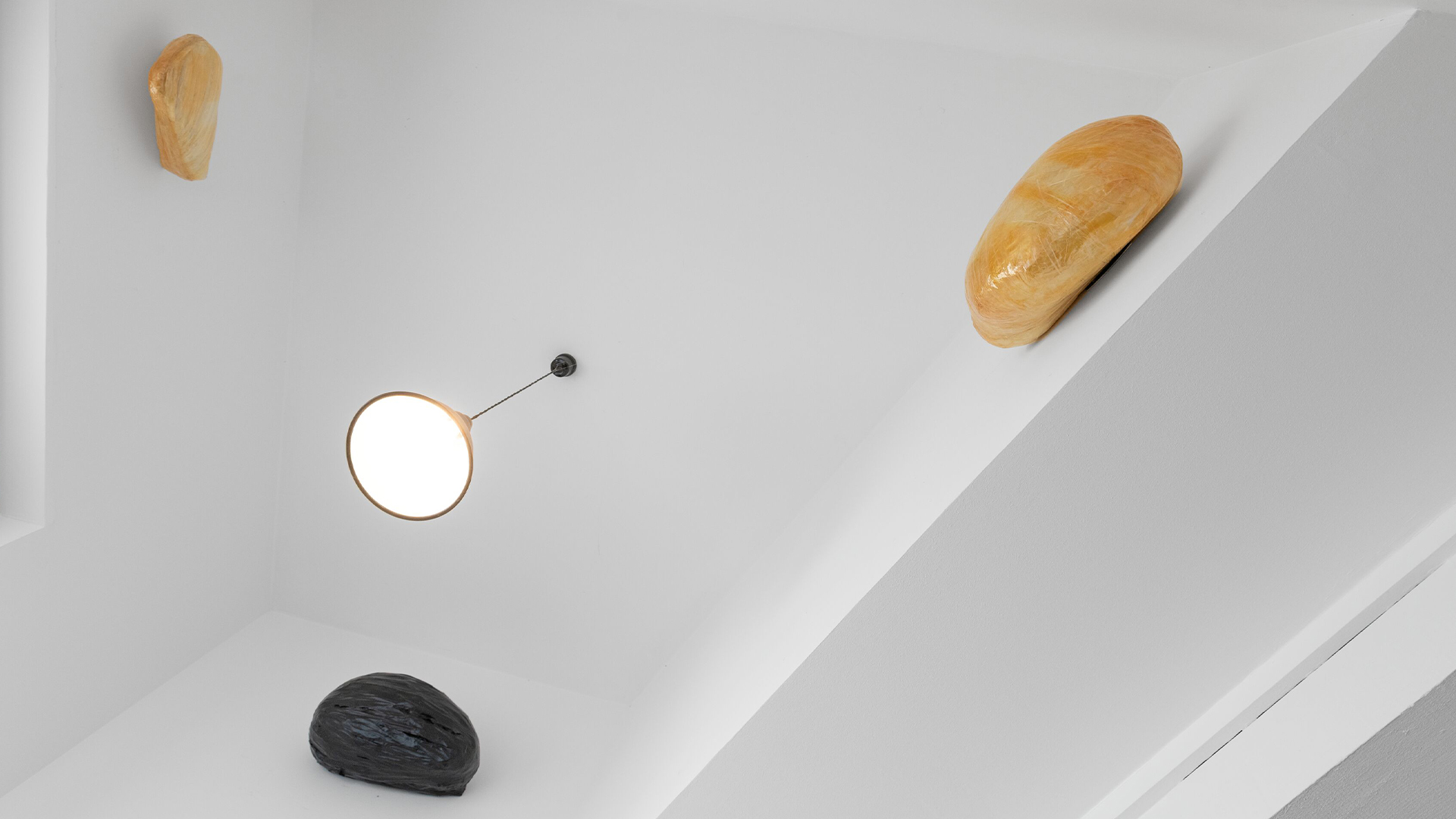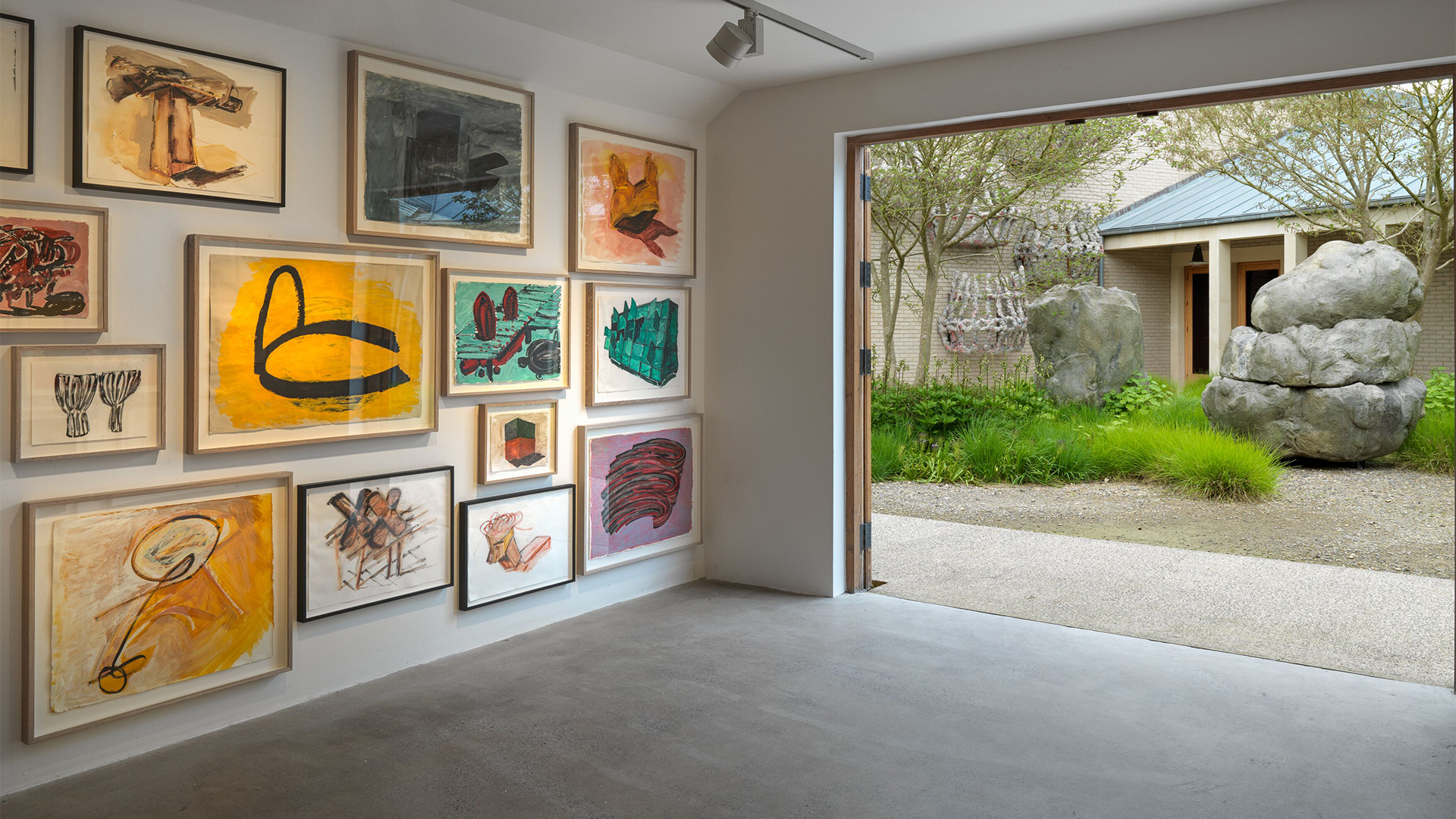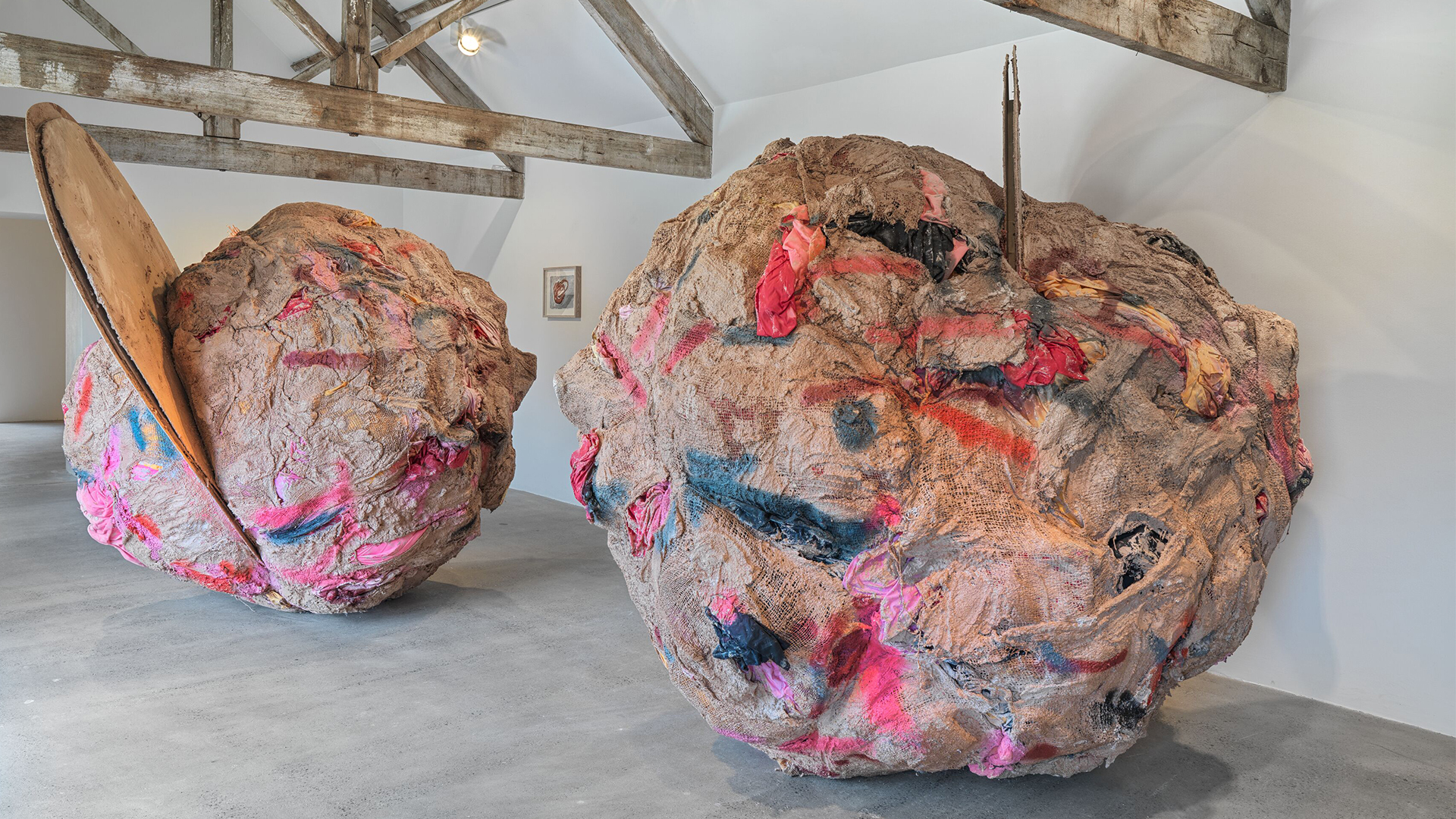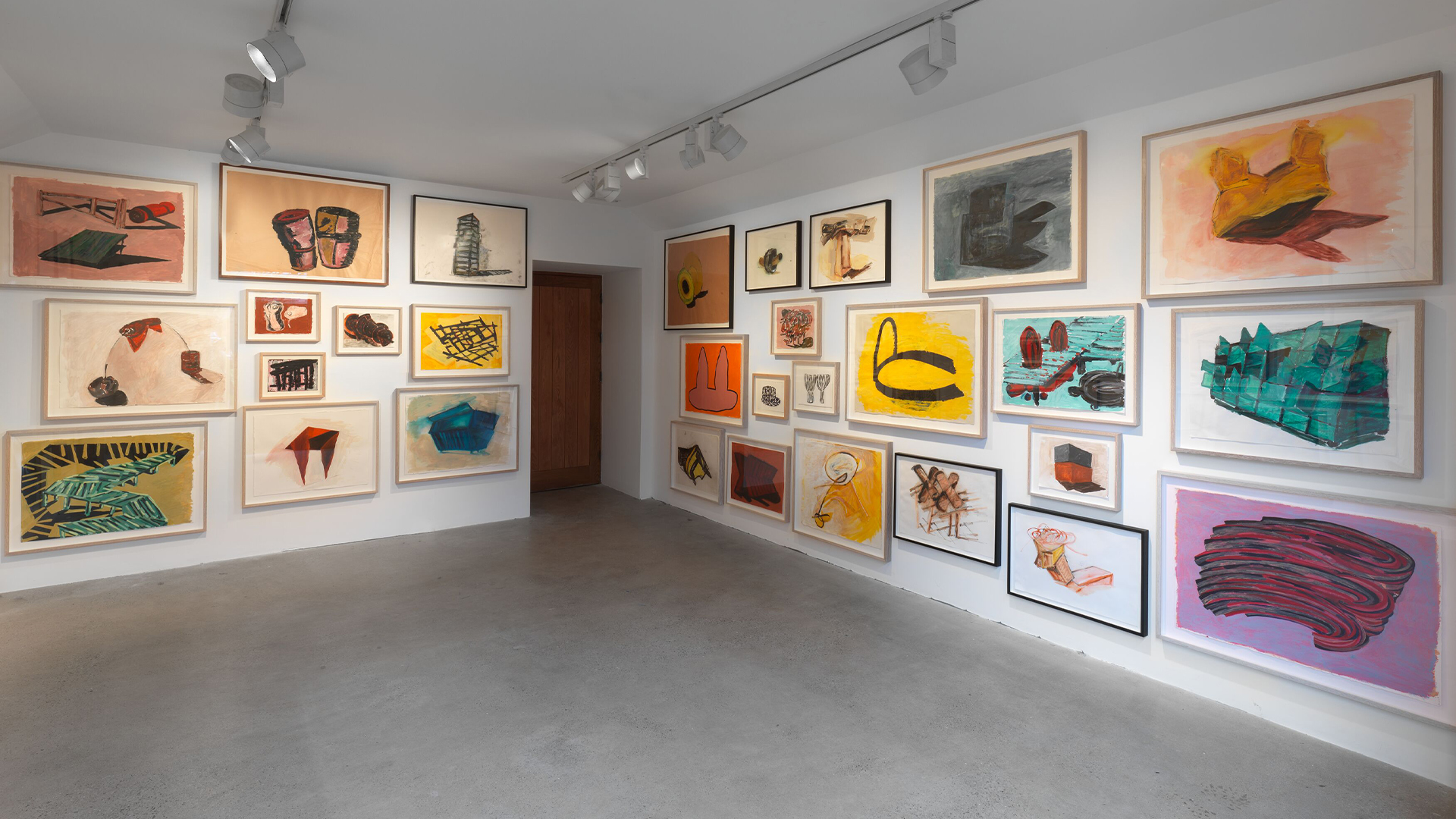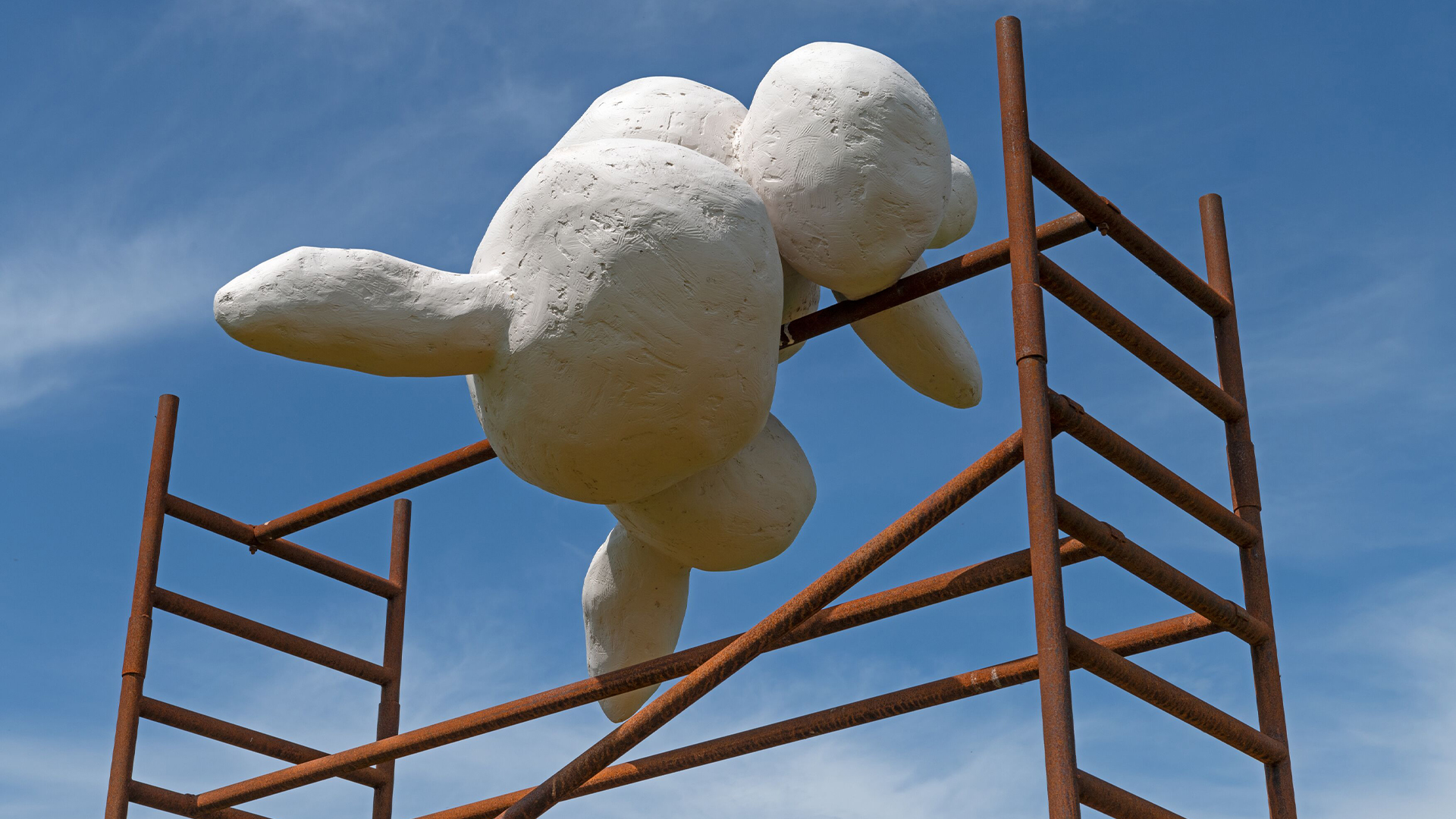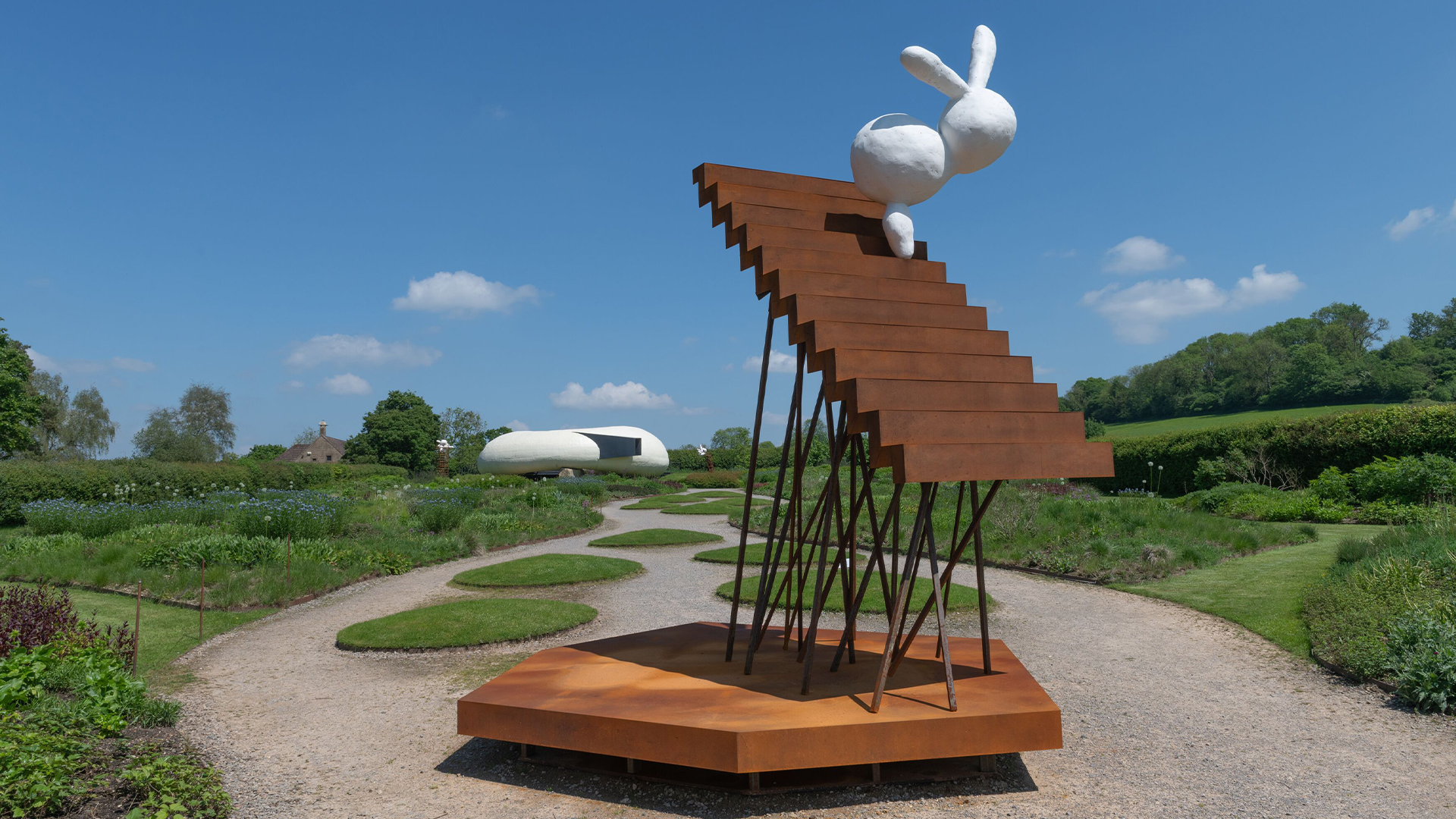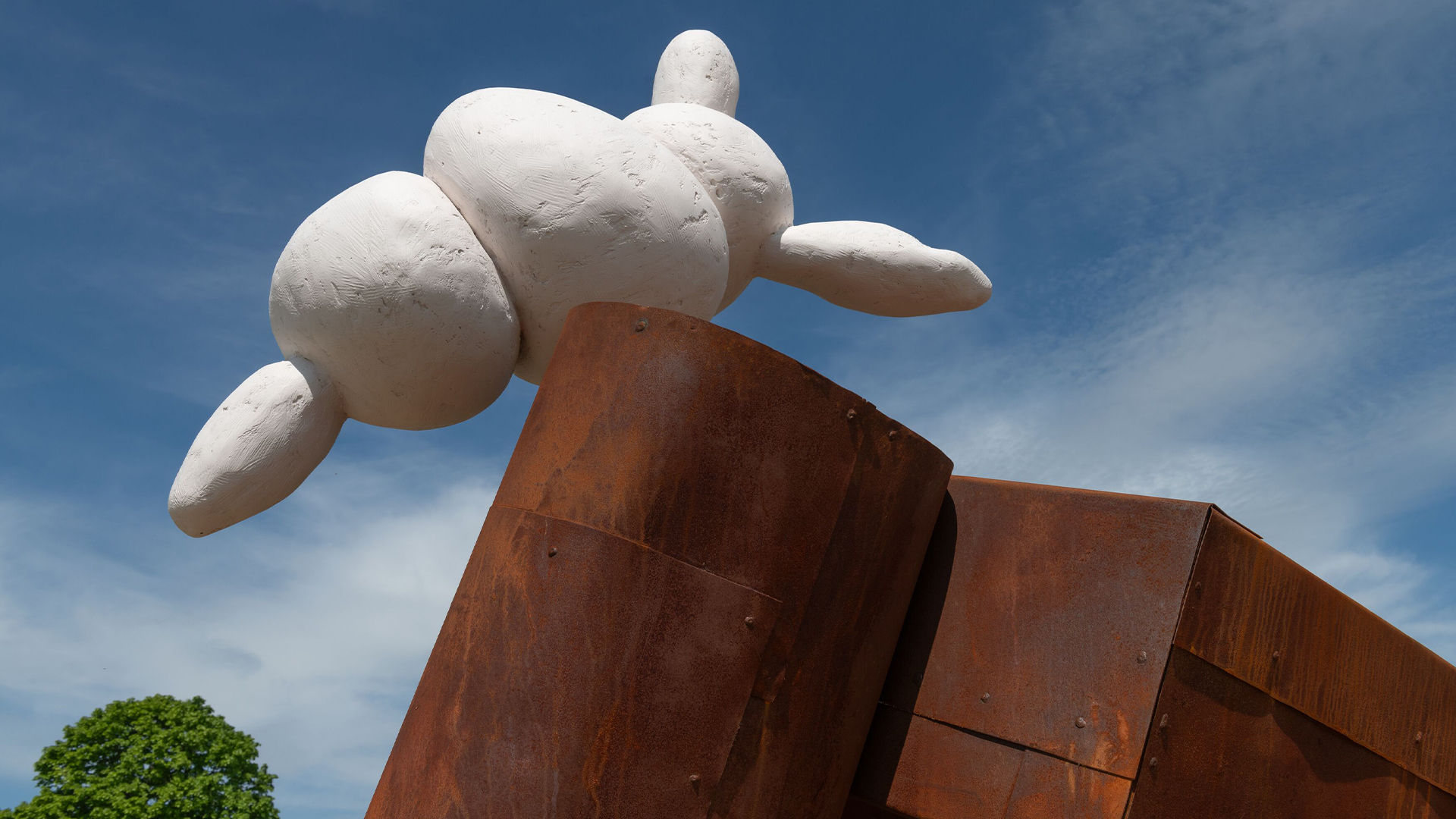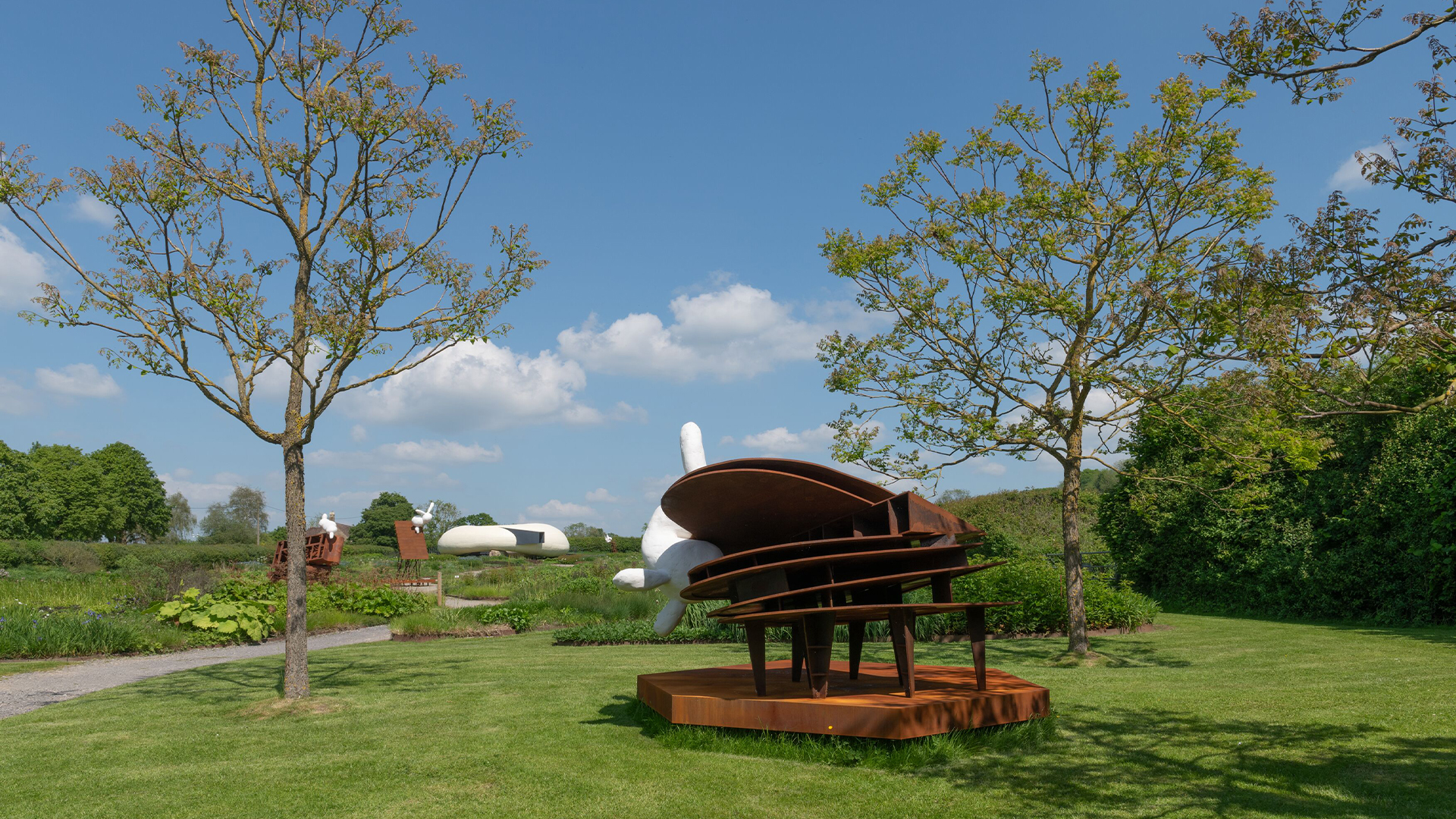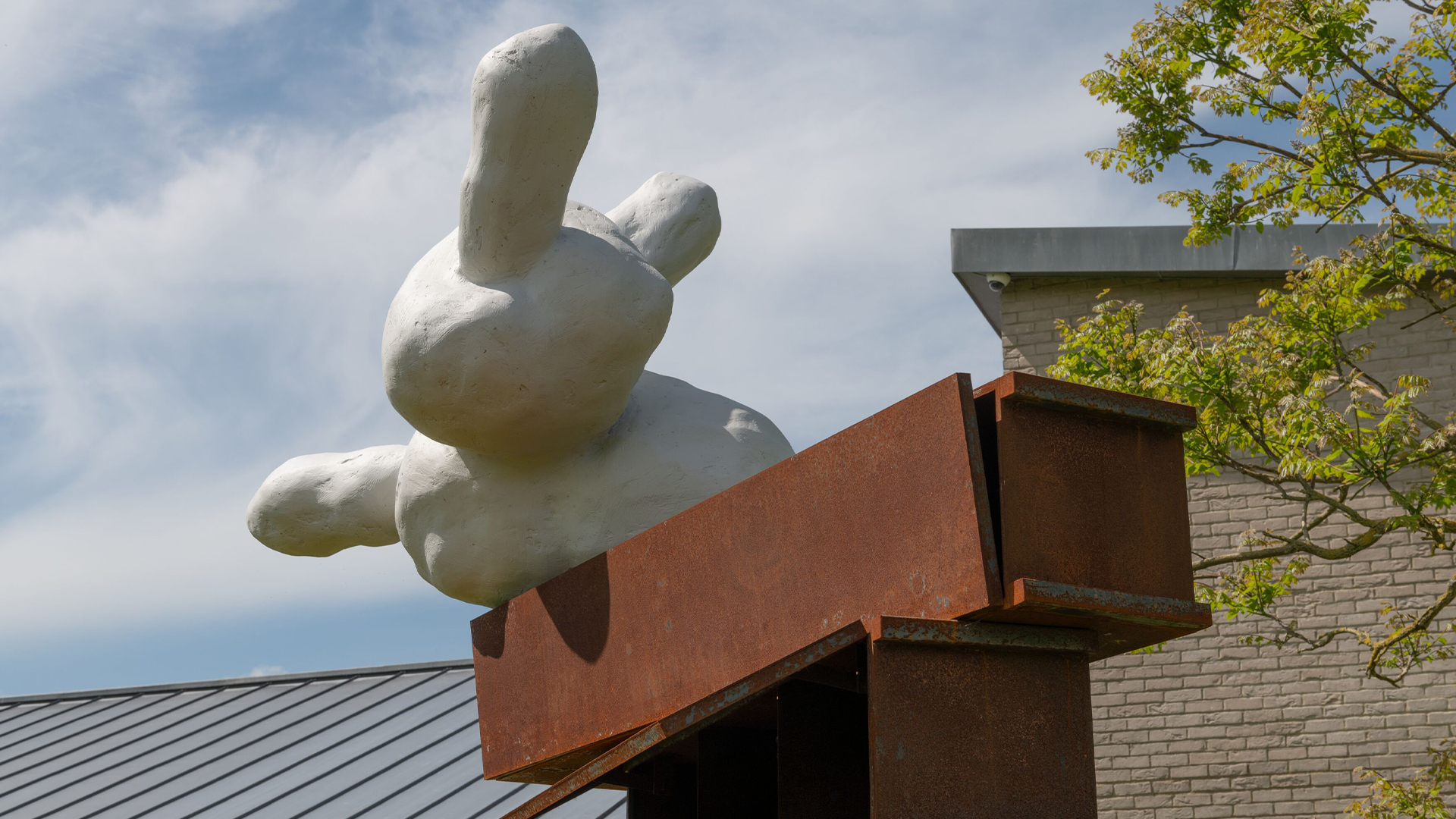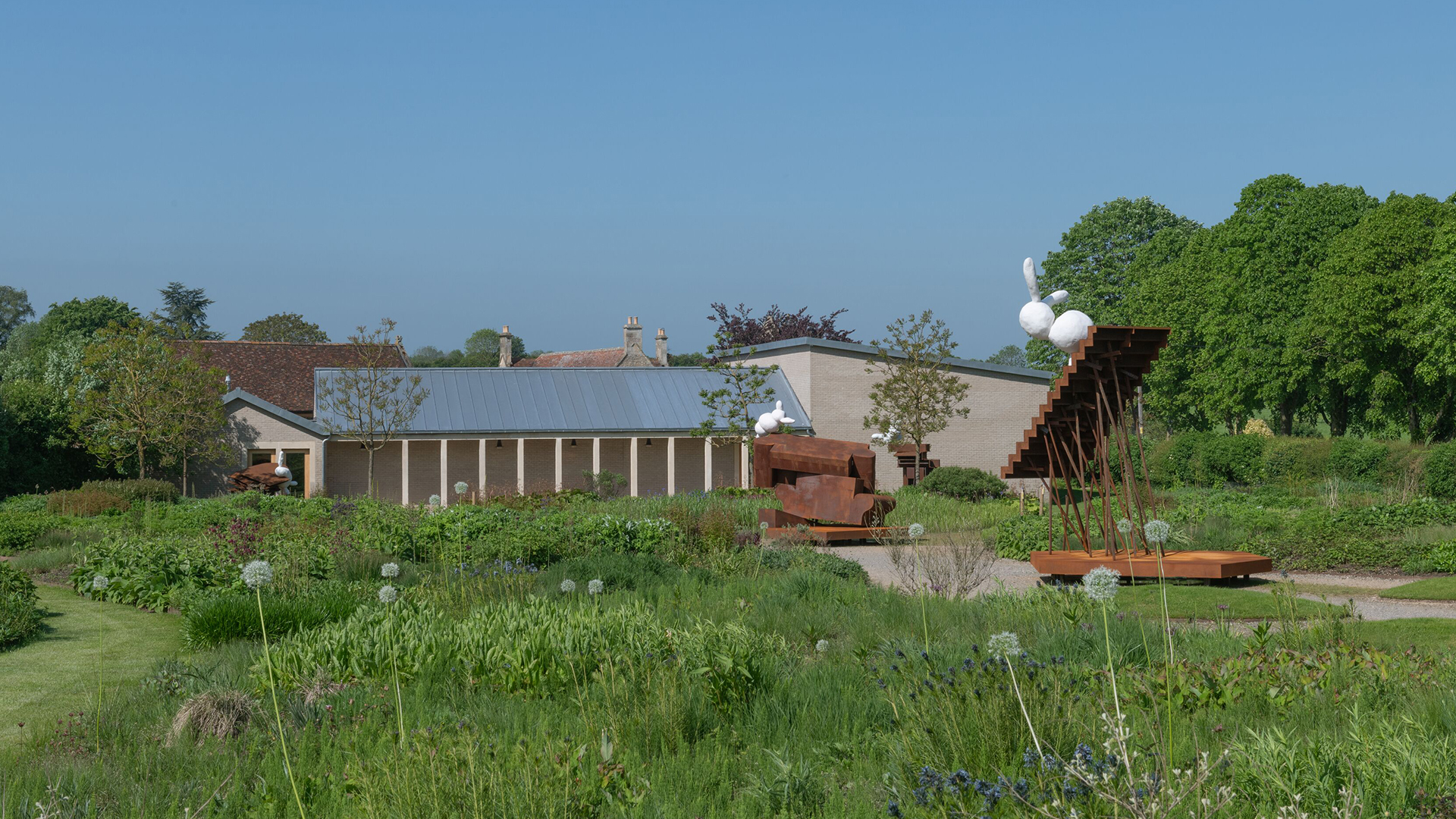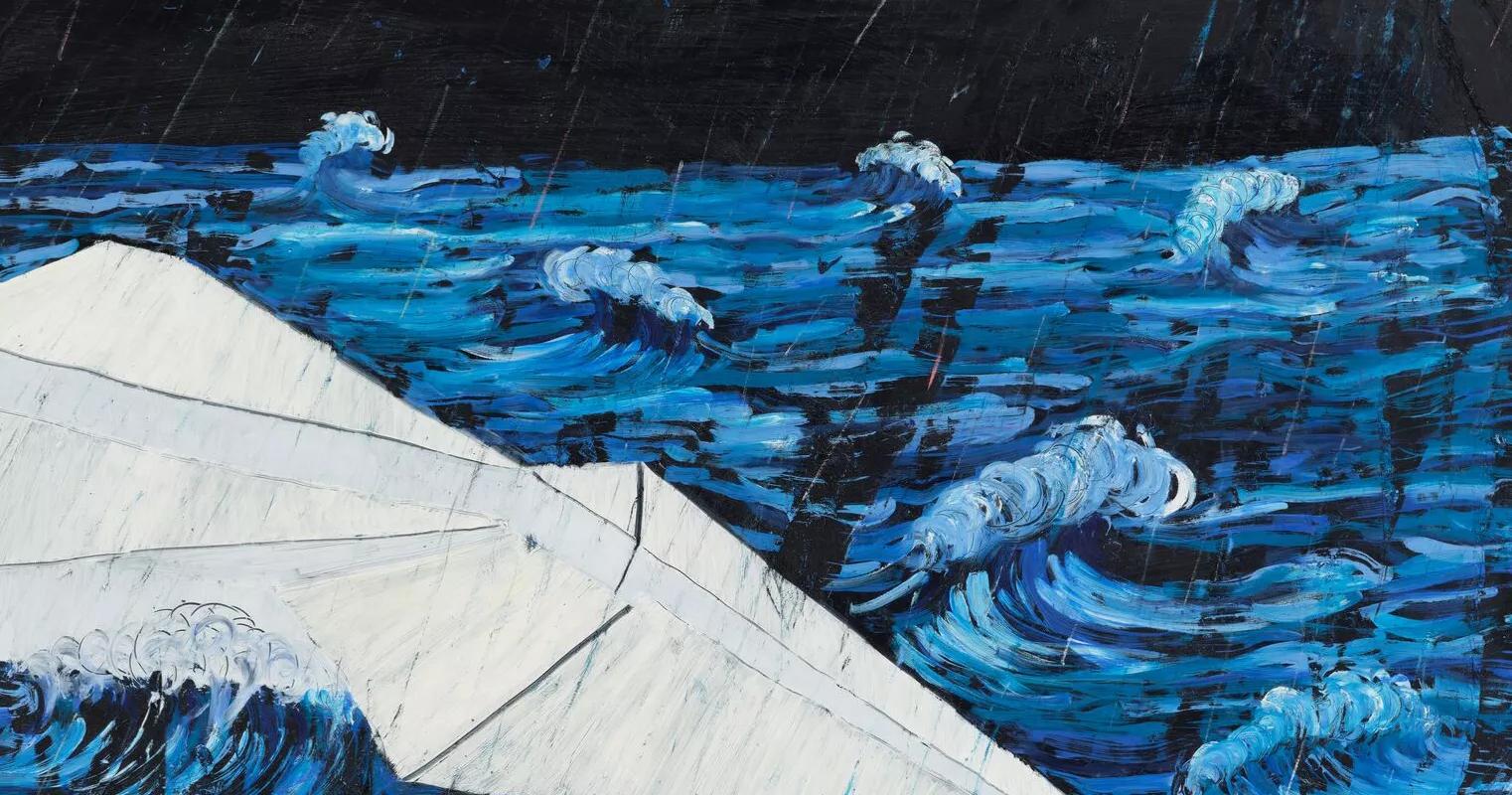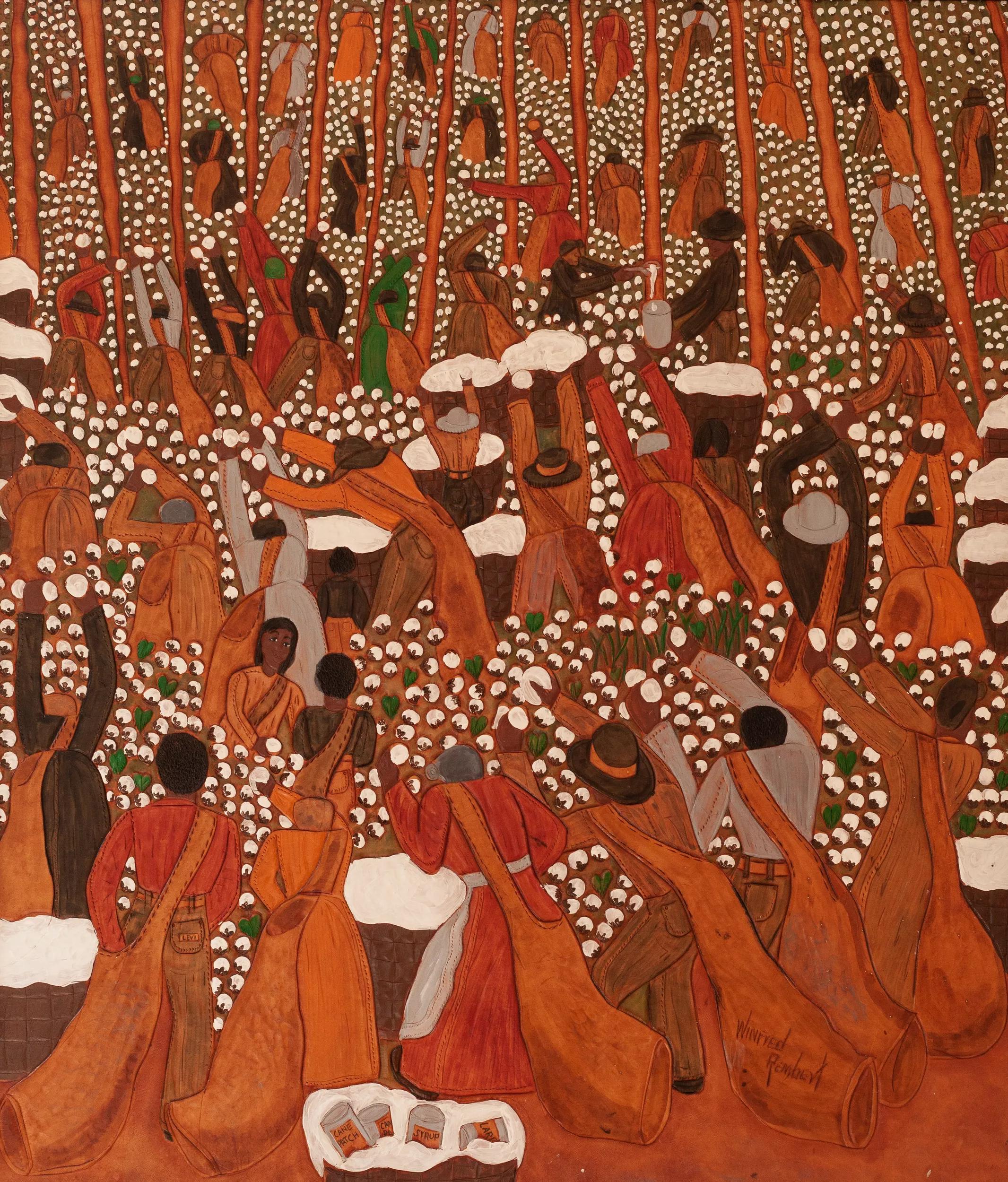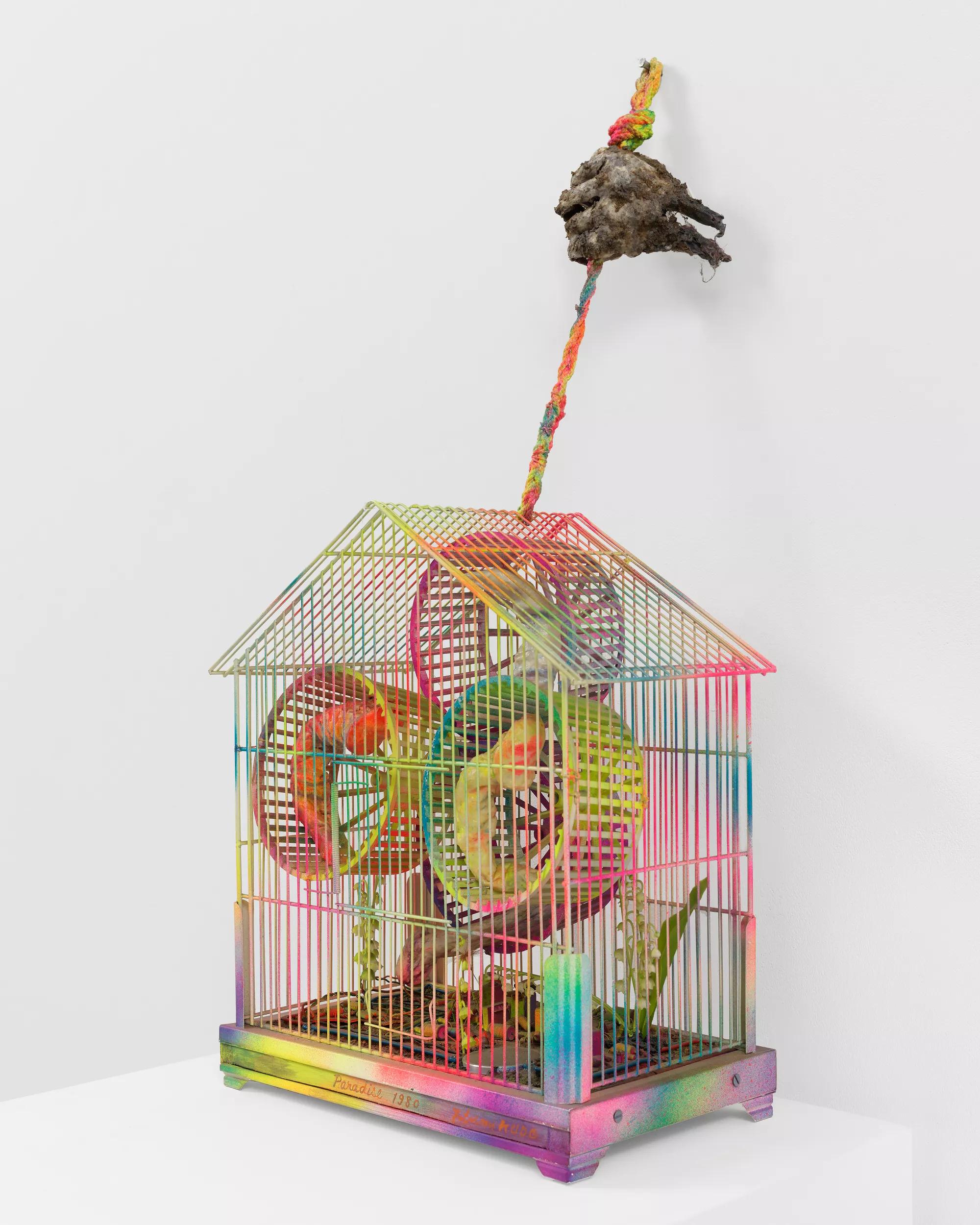Phyllida Barlow
unscripted
25 May 2024 – 5 January 2025
Curated by Frances Morris
Somerset
The work of Phyllida Barlow (1944 – 2023) takes over our Somerset gallery in a celebration of the British artist’s transformative approach to sculpture; marking the gallery’s 10th anniversary that was inaugurated by Barlow’s solo exhibition ‘GIG’ in 2014. Over a career that spanned six decades, Barlow took inspiration from her surroundings to create imposing installations that can be at once menacing and playful. Barlow’s restless invented forms stretch the limits of mass, volume and height as they block, straddle and balance precariously. The audience is constantly challenged into a new relationship with the sculptural object, the gallery environment and the world beyond.
Explore the Exhibition
Curated by Frances Morris, ‘Phyllida Barlow. unscripted’ brings together a collection of the artist’s signature elements from several major installations, as well as a number of free-standing sculptures ranging from the early 1970s to work made in the last year of Barlow’s life. The landscape, courtyards and garden beyond the galleries are animated and disrupted by a selection of sculptures, including ‘PRANK’, a series of seven wonderfully—and deliberately—ungainly sculptures Barlow made for New York’s City Hall Park in 2023, shown for the first time in the UK.
The exhibition also features previously unseen smaller-scale works, including drawings and maquettes. These works reinforce the important role the studio played in Barlow’s practice, whilst conveying the restless energy, endless curiosity and unabated ambition which are as much a part of Barlow’s legacy as the works themselves.
The title ‘unscripted’ refers to the experimental and iterative nature of Barlow’s working process, allowing each project to evolve through a process of making, unmaking and remaking, involving chance and mishap as well as changes of mind. She saw this working practice as akin to processes of growth, decay and renewal in nature. Barlow was aware of the forthcoming exhibition and had begun to think seriously about bringing her interest in painting to the fore.
‘Over the last 10 years, Phyllida Barlow kept her fans and followers on the edge of their seats as she brought new and ever more audacious projects to life in venues across the world. Unfolding as a running commentary on the tragedies and absurdities of our time, each work formed part of an ongoing and intensely experimental investigation into the techniques and materials of art making, seeking visual equivalents to her own personal experience of living and looking.’—Frances Morris
The Bourgeois gallery opens the exhibition with singular works that span almost four decades of Barlow’s career, ranging from the remake of ‘shedmesh, 1975 – 2020’ (1975 – 2020), to two of the artist’s last works, ‘untitled: hollow; 2022’ (2022) and ‘untitled: modernsculpture; 2022’ (2022). These works are part of a continuous investigation of the language and possibilities of sculpture, which emerged as Barlow found her voice as a student through exploring the legacy of British and European post-war sculpture. Key works in this display make references to other artists who became part of her internal conversation for many years, notably Alighiero Boetti, Eva Hesse and Tony Smith. These works engage critically with the grid and cube of minimalism, post-minimalism’s resistance to geometry and the materiality of Arte Povera.
In contrast, the Rhoades Gallery combines large-scale elements originally conceived for several different installations including ‘folly’ (2017), Barlow’s acclaimed British Pavilion for the 57th Venice Biennale in 2017. This gallery engages with the artist’s ongoing interest in states of urban destruction and unrest, reflecting on Barlow’s fascination for natural and human-driven disaster, stretching back to her memories of bomb-damaged London, as well as her interest in fallen monuments. During her final years, Barlow was increasingly recycling elements of one project into another, or enabling individual items a future life liberated from its original context.
This gallery takes this habit as its methodology; key gatherings of works are inspired by juxtapositions Barlow made from disparate parts which can be found in photographic documentation of her exhibitions. Other choices and sequences take care to respect some of Barlow’s key principles and preferences, for example she preferred to block entrances and exits, inducing curiosity in the viewer. She often placed obstacles in the way of visitors, in their pathway or disturbing their line of sight.

untitled: folly; awnings; 2016/2017
2016 – 2017

untitled:
2007

untitled: 21 arches
untitled: folly; bouldercolumn; 2016/2017
2012
2016 – 2017
There were periods in Barlow’s life where her principal activity as an artist took place in the studio. This was the case for months and years during her teaching career when significant exhibition opportunities were harder to come by, whilst raising a young family, and more recently during lockdown. The Pigsty gallery focuses on these more private aspects of Barlow’s practice and speak to forms of ‘open’ experimentation.

untitled: smallpainting; 10
2022 – 2023

untitled: smallpainting; 5
2022 – 2023

untitled: smallpainting; 8
2022 – 2023

untitled: smallpainting; 3
2022 – 2023

untitled: smallpainting; 15
2022 – 2023

untitled: smallpainting; 13
2022 – 2023
‘TORSO’ and ‘LOAF’ (1986 – 1989) are among the earliest works included, alongside maquettes and drawings that have never been shown in public. The works represent motifs repeatedly explored in her sculpture, including several works on display elsewhere in the exhibition, while others touch on primary themes and interests in her art and life. Barlow’s first and last group of paintings on canvas are also on display. Small-scale and captivating, the painterly experiments were part of a move to larger-scale canvases that were to be debuted in this very exhibition.

untitled: parkhousemodel; 44
2015 – 2023

untitled: parkhousemodel; 70
2015 – 2023

untitled: parkhousemodel; 57
2015 – 2023
Over the course of a long career there were images and forms, materials and subjects that occurred over and over in Barlow’s work and held a special significance for her. The Workshop gallery foregrounds ‘untitled: double act’ (2010), and combines two adjacent spheres each speared by a vertical intrusion, one in the form of a ring, the other a disc. The reference to theatre in the title evokes Barlow’s longstanding interest in theatre and the staging of her work for audiences. Here the double act, was effectively an ‘in conversation’ with Nairy Baghramian who she exhibited alongside at the Serpentine Gallery the same year, and point to Barlow’s continuing interest in and responsiveness to her peers.
Barlow’s sculptures are also on view in the farmyard, courtyard and garden, including works being shown in the open air for the first time.
Beginning in the farmyard, works such as ‘PRANK: jinx’ (2022 – 2023) tower over visitors on arrival. ‘untitled: megaphone’ (2014) and ‘untitled: stackedchairs’ (2014) overflow from the gallery’s granary building—a site which has never-before been used to exhibit works—parodying its original purpose for storing items such as grain. Two stacked boulder works, ‘untitled: triplestackboulders’ (2014) and ‘untitled: squatboulders’ (2014), are nestled in the internal Cloister Courtyard.
The Oudolf Field is animated and disrupted by the artist’s PRANK series (2022 – 2023). Barlow based each steel and fiberglass sculpture on a familiar object that might be found at home or in an artist’s studio. An oddly irregular white form first used by the artist in the early 1990s, known as ‘rabbit ears,’ appears on each angular steel assemblage.


The ‘unscripted’ Artist Residencies
Taking place in parallel with ‘Phyllida Barlow. unscripted’, this summer residency will welcome guest artists, Jessie Flood-Paddock, Young In Hong, Jack Killick and Hamish Pearch, to spend time living and working in Somerset. Selected by curator Frances Morris, and in the spirit of Phyllida Barlow, the artists will be invited to seek inspiration from the exhibition, landscape and architecture of Somerset, as well as conversations that develop between the group.

Education Lab: ‘Open Art School’
Alongside the exhibition, our Education Lab, ‘Open Art School’, has been developed in partnership with Bath Spa University. Taking Barlow’s life-long engagement with arts education and notably her ethos of there being ‘no right or wrong way’ to be creative, the Education Lab draws on the latest thinking within creative pedagogy and experimental learning.

Phyllida Barlow Outdoor Sculpture Unveiled in Somerset
As part of the exhibition, a presentation of sculpture is on view across all of the outdoor spaces in Somerset, featuring 12 works from 2011 – 2023.

On View in Somerset
‘Phyllida Barlow. unscripted’ is on view through 5 January 2025. The gallery is open Thursday – Sunday, 12 – 5 pm.
About the Artist
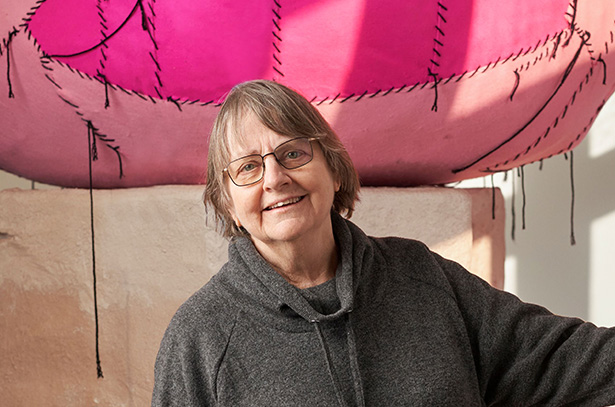
Phyllida Barlow
For almost 60 years, British artist Phyllida Barlow took inspiration from her surroundings to create imposing installations that can be at once menacing and playful. She created large-scale yet anti-monumental sculptures from inexpensive, low-grade materials such as cardboard, fabric, plywood, polystyrene, scrim, plaster and cement. These constructions were often painted...
Inquire about Phyllida Barlow works
Related Content
Current Exhibitions
1 / 10
